
Search Product category Any value Sample Label 1 Sample Label 2 Sample Label 3

Business Plan vs. Financial Plan: What’s The Difference?
- December 16, 2022
- Fundraising

When preparing their business plan, entrepreneurs sometimes get confused between different terms, especially the difference between a business plan and a financial plan.
Whilst a business plan must include a financial plan, these 2 documents are very different and have separate objectives.
In this article we explain you what are a business plan and a financial plan, their objectives and what are the key differences between them.
What is a Business plan?

A business plan is a long document that contains a detailed description of your business and your strategy. Unlike a pitch deck, a business plan is a Word document and often includes 30 up to 100 pages.
We use business plans to communicate information about a business to third-parties. We often use it when a business needs funding. Debt investors (e.g. banks or venture debt investors ) almost always require a business plan as part of a loan application. Instead, equity investors usually ask for a pitch deck .
What should you include in a business plan?
Chances are you will find different definitions online for what you need to include in your business plan. Yet, most interested parties (investors or banks) agree on the different elements that a business plan must include, they are:
- Executive summary : usually a one-pager, this section outlines key information about the company such as a short business overview , operations, location and leadership
- Products and services : a detailed overview of the different products and/or services the company offers including features, benefits to customers and pricing. This section can also include, if relevant, information about the production and manufacturing elements (costs, materials and processes). Also, include here any proprietary technology (e.g. patents) your business might have
- Market analysis : a description of the market including its size and its growth. Here you should also include any information about your competitive environment, especially you position yourself vs. competitors
- Marketing strategy : this section explains how a business acquires and retains its customers. Your acquisition strategy ( inbound or outbound for example) as well as your conversion funnel must be clearly explained. If any, you should include here the different marketing campaigns you are running (e.g. paid ads, offline marketing), their goals and historical performance.
- Financial plan : every business plan must include a financial plan. As explained below, a financial plan is the projection in the future of the 3 financial statements . Usually, a financial plan is a 3- to 5-year forecast , depending on the objective of the business plan and the stage the business is in today.
What is a Financial plan?
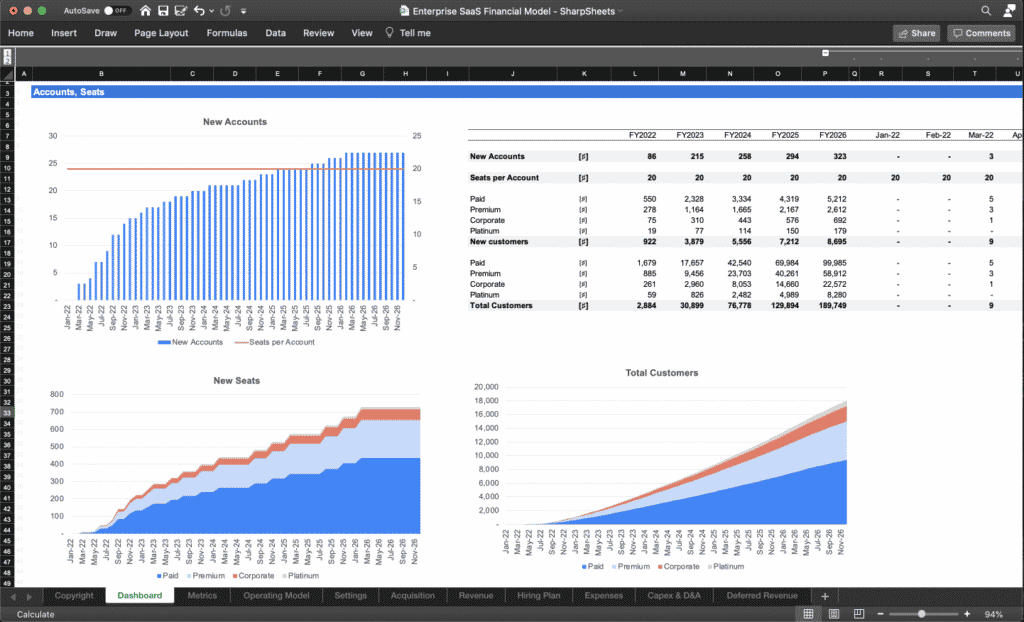
As explained above, a financial plan is an element of every business plan.
A financial plan can take different forms (charts, tables) yet should always at least show the projection over a certain period ( 3- to 5-year usually) of the 3 financial statements.
A financial plan should also include some historical data (if any). If you have 3 years of historical financial data, include them in there as well. Indeed, investors will want to see how realistic are your projections .
Also, make it clear what are the key assumptions behind your financial forecasts: projecting the future isn’t easy and we often need to make some assumptions. Yet, the more available sources and data points you have to substantiate your projections, the better. Investors appreciate entrepreneurs who are realistic about their projections and understand the opportunities as well as the potentials risks involved. Whenever possible, use historical data and/or industry benchmarks .
Privacy Overview

Business Plan Development
Masterplans experts will help you create business plans for investor funding, bank/SBA lending and strategic direction
Investor Materials
A professionally designed pitch deck, lean plan, and cash burn overview will assist you in securing Pre-Seed and Seed Round funding
Immigration Business Plans
A USCIS-compliant business plan serves as the foundation for your E-2, L-1A, EB-5 or E-2 visa application
Customized consulting tailored to your startup's unique challenges and goals
Our team-based approach supports your project with personal communication and technical expertise.
Pricing that is competitive and scalable for early-stage business services regardless of industry or stage.
Client testimonials from just a few of the 18,000+ entrepreneurs we've worked with over the last 20 years
Free tools, research, and templates to help with business plans & pitch decks
Understanding The Distinction Between a Business Plan & Business Planning
In the dynamic world of entrepreneurship, our choice of words matters. Our vocabulary can often become a veritable alphabet soup of jargon, acronyms, and those buzzwords (I'm looking at you, "disrupt").
And let's not get started on business cliches – "circle back," "synergy," “deep-dive,” etc.
Yet sometimes, it's worth pausing to consider the words we casually sprinkle around in our business conversations. In a previous article, we explored the differences between strategic and tactical business planning , two related but distinct approaches to guiding a business. Now, we're going to delve into another pair of terms that often get used interchangeably but have unique implications: "business plan" (the noun) and "business planning" (the verb).
The business plan, a noun, is a tactical document. It's typically created for a specific purpose, such as securing a Small Business Administration (SBA) loan . Think of it as a road map – it outlines the route and the destination (in this case, the coveted bank loan). But once you've reached your tactical goal (in this case, getting the loan), it often gets shoved in the glove compartment, forgotten as part of the organization's action plan until the next road trip (i.e., additional funding ).
Business planning is not a static concept, but rather a dynamic verb. It's an ongoing process that necessitates continual adjustments. It's about creating a holistic, interconnected value-creating strategic plan that benefits all stakeholders. This includes attracting top-tier employees, ensuring a return on lending or investment, and making a positive impact on the community, whether online or in real life.
That being said, the customer remains at the heart of this process. Without customers, there are no sales, no revenue, and no value. Everything else is contingent on this key element.
If we were to compare the business plan to a map, then business planning would be the journey. It's a continuous process of making strategic decisions, adapting to new paths, and steering the business towards its goals. Sometimes, it even involves redefining objectives midway.
So, let's do a "deep-dive" (I couldn't resist) into these two terms, examining their application in the real world. Along the way, we'll uncover some tools that can aid us in the ever-evolving process of strategic business planning and the more finite task of crafting a winning business plan.
The Business Plan is a Document
Alright, let's take a closer look at a phrase we've all tossed around: the business plan. Imagine it as the detailed blueprint of your organization's goals, strategies, and tactics. It's like the North Star for your entrepreneurial ship, shedding light on the key questions: what, why, how, and when (speaking of questions, here are some FAQs about the business plan ).
Writing a solid business plan isn't easy , especially if you're just dipping your toes into the world of business planning. But don’t worry; we'll get to that (eventually).
So, let's break it down. What does a business plan document consist of, exactly?
- Executive Summary: Just as it sounds, this is a quick overview of the nitty-gritty that's in the rest of your business plan. It's the introduction to your organization, highlighting your mission statement and serving up the essential details like ownership, location, and structure.
- Company Overview: This is where you will detail your products and/or services, their pricing, and the operational plan. If you're opening a restaurant, this section is where you present your menu, and it's also where you talk about your ingredient sourcing, the type of service you'll provide, and the ambiance you're aiming for.
- Market Analysis Summary: This section demands a comprehensive analysis of your industry, target market, competitors, and your unique selling proposition. Without access to top-notch (and often not free) research tools, it can be challenging to find current industry data. Check out our guide on the best market research tools to get started.
- Strategy and Implementation Summary: Here, you'll lay out your short-term and long-term objectives along with the strategies you'll implement to attract and retain customers. This is where you’ll talk about all the different marketing and sales strategies you'll use to charm your future customers.
- Management Summary: This is your chance to spotlight your company's key personnel. Detail the profiles of your key leaders, their roles, and why they're perfect for it. Don't shy away from acknowledging talent gaps that need to be filled, and do share how you plan to fill them!
- Pro Forma Financials: This is where you get down to the dollars and cents with a detailed five-year revenue forecast along with crucial financial statements like the balance sheet and the profit & loss statement.
A business plan is an essential instrument, not just for securing funding, but also for communicating long-term goals and objectives to key stakeholders. But, while a business plan is essential for many circumstances, it's important to understand its scope and limitations. It's a tactical tool, an important one, but it's not the be-all and end-all of business strategy. Which brings us to our next point of discussion: business planning.
Business Planning is a Process
If we view the business plan as a blueprint, then business planning is the architect. But let's be clear: we're not building just any old house here. We're building the Winchester Mystery House of business. Just as the infamous Winchester House was constantly under construction , with new rooms being added and old ones revamped, so too is your business in a state of perpetual evolution. It's a dynamic, ongoing process, not a one-and-done event.
In the realm of business planning, we're always adding 'rooms' and 'corridors' – new products, services, and market strategies – to our 'house'. And just as Sarah Winchester reputedly consulted spirits in her Séance Room to guide her construction decisions, we consult our customers, market data, and strategic insights to guide our strategy. We're in a constant state of assessing, evolving, executing, and improving.
Business planning touches all corners of your venture. It includes areas such as product development, market research, and strategic management. It's not about predicting the future with absolute certainty – we’re planners, not fortune tellers. It's about setting a course and making calculated decisions, preparing to pivot when circumstances demand it (think global pandemics).
Business planning is not a 'set it and forget it' endeavor. It's akin to being your company's personal fitness coach, nudging it to continually strive for better. Much like physical fitness, if you stop the maintenance, you risk losing your hard-earned progress.
Business Planning Case Study: Solo Stove
Now that summer is here, my Solo Stove stands as a tangible testament to effective business planning.
For those unfamiliar, Solo Stove started with a simple yet innovative product – a smoke-limiting outdoor fire pit that garnered over $1.1 million on Kickstarter in 2016, far exceeding its original objective. Since then, it has expanded its portfolio with products tailored to outdoor enthusiasts. From flame screens and fire tools to color-changing flame additives, each product is designed to fit seamlessly into modern outdoor spaces, exuding a rugged elegance that resonates with their target audience.
This strategic product development, a cornerstone of business planning, has allowed Solo Stove to evolve from a product to a lifestyle brand. By continually listening to their customers, probing their desires and needs, and innovating to meet those needs, they've built a brand that extends beyond the products they sell.
Their strategy also includes a primary "Direct To Consumer" (DTC) revenue model, executed via their e-commerce website. This model, while challenging due to increased customer acquisition costs, offers significant benefits, including higher margins since revenue isn’t split with a retailer or distributor, and direct interaction with the customer.
Through its primary business model, Solo Stove has amassed an email database of over 3.4 million customers . This competitive advantage allows for ongoing evaluation of customer needs, driving product innovation and improvement, and enabling effective marketing that strengthens their mission. The success of this approach is evident in the company's growth: from 2018 to 2020, Solo Stove’s revenue grew from $16 million to $130 million , a 185% CAGR.
While 85% of their revenue comes from online DTC channels, Solo Stove has also enhanced their strategic objectives by partnering with select retailers that align with their reputation, demographic, and commitment to showcasing Solo Brands’ product portfolio and providing superior customer service.
Solo Stove's success underscores how comprehensive business planning fosters regular assessment, constant evolution, and continual improvement. It's more than setting goals – it's about ceaselessly uncovering ways to deliver value to your customers and grow your business.
However, even successful businesses like Solo Stove can explore additional strategic initiatives for growth and diversification, aligning with their strategic direction and operational planning. For instance, a subscription model could provide regular deliveries of products or a service warranty, creating a consistent revenue stream and increasing customer loyalty. Alternatively, a B2B model could involve partnerships with adventure tourism operators, who could purchase Solo Stove products in bulk.
These complementary business models, when integrated into the operational plan, could support the primary DTC model by driving customer acquisition, providing ongoing revenue streams and expanding the customer base. This strategic direction ensures that Solo Stove continues to thrive in a competitive market.
The Interplay between the Business Plan (Noun) and Business Planning (Verb)
In the realm of business strategy, there's an intriguing chicken-and-egg conundrum: which comes first, the business plan or business planning? The answer is both straightforward and complex: they're two sides of the same coin, each indispensable in its own right and yet inextricably linked.
The process of business planning informs and modifies the business plan, just as the business plan provides a strategic foundation for the planning process. This interplay embodies the concept of Model-Based Planning™, where the business model serves as a guide, yet remains flexible to the insights and adaptations borne out of proactive business planning.
Let's revisit the Solo Stove story to elucidate this concept. Their business model, primarily direct-to-consumer, laid the groundwork for their strategy. Yet, it was through continuous business planning – the assessment of customer feedback, market trends, and sales performance – that they were able to refine their model, expand their product portfolio, and enhance their growth objectives. Their business plan wasn't a static document but a living entity, evolving through the insights gleaned from ongoing business planning.
So, how can you harness the power of both the tactical business plan and strategic business planning in your organization? Here are a few guiding principles:
- Embrace Model-Based Planning™: Start with a robust business model that outlines your strategic plan. But remember, this isn't set in stone—it's a guiding framework that will evolve over time as you gain insights from your strategic planning process.
- Make business planning a routine: Regularly review and update your business plan based on your findings from market research, customer feedback, and internal assessments. Use it as a living document that grows and adapts with your business.
- Foster open communication: Keep all stakeholders informed about updates to your business plan and the insights that informed these changes. This promotes alignment and ensures everyone is working towards the same goals.
- Be agile and adaptable: A key part of business planning is being ready to pivot when necessary . Whether it's a global pandemic or a shift in consumer preferences, your ability to respond swiftly and strategically to changing circumstances is crucial for long-term success.
Fanning the Flames: From Planning to Plan
The sparks truly ignite when you understand the symbiotic relationship between tactical business plans, strategic business planning, and the achievement of strategic goals. Crafting a tactical business plan (the noun) requires initial planning (the verb), but then you need to embark on continuous strategic planning (the verb) to review, refine, and realign your strategic business plan (the noun). It's a rhythm of planning, execution, review, and adjustment, all guided by key performance indicators.
Business planning, therefore, isn't a one-off event, but rather an active, ongoing process. A business plan needs constant nurturing and adjustment to stay relevant and guide your organization's path to success. This understanding frames your business plan not as a static document, but as a living, breathing entity, evolving with each step your business takes and each shift in the business landscape. It's a strategic roadmap, continually updated to reflect your organization's objectives and the ever-changing business environment.

How to Write a Management Summary for Your Business Plan
Entrepreneurs are often celebrated for their uncanny ability to understand others – their customers, the market, and the ever-evolving global...

Understanding Venture Debt vs Venture Capital
Despite growth in sectors like artificial intelligence, venture capital funding has seen better days. After peaking at $347.5 billion in 2021, there...

Going Beyond Writing: The Multifaceted Role of Business Plan Consultants
Most people think of a professional business plan company primarily as a "business plan writer." However, here at Masterplans, we choose to approach...

SWTCH by Pigment
Three days of predictions, insights, and advice from leaders in finance, sales, HR, supply chain and more
Register now here
By Dean Sorensen , Founder of IBP Collaborative
Integrated Financial Planning (IFP) and Integrated Business Planning (IBP) mean different things to different people. Primarily because there is no universal definition of what “fully integrated” processes entail. This article presents a maturity model to explain what it means and the capabilities that comprise it.
Introduction
What’s the difference between IFP and IBP? And how do IFP and IBP differ from the plethora of integration approaches and terminologies, examples of which are shown in exhibit 1? These questions were posed to me by a Vice President of Finance of a Global Manufacturing Company, hereafter referred to as Bob and GMC respectively.

Why was Bob asking these questions? GMC had made significant investments in planning and performance management (P&PM) methods and tools. Despite these investments, capability gaps remained. GMC was still struggling to achieve the strategic, financial and operational (SFO) management objectives shown in exhibit 2. What Bob didn’t appreciate was that most of his [global manufacturing] peers were also struggling to achieve these interconnected objectives.

For Bob, the most glaring of these capability gaps was scenario planning. He envisioned an end to end scenario planning process that could answer interconnected questions, like those shown below in exhibit 3. This process would provide the basis to develop and deploy executable plans, while simultaneously optimizing free cash flow and exposing financial and operational risks.

To Bob’s dismay, this vision never materialized. GMC’s rolling forecast process was only loosely connected to IBP and could only support the most basic forms of cash flow [and foreign currency exposure] forecasting.
Bob was frustrated by the situation. GMC had partnered with a large / leading software company (hereafter referred to as LSC) to avoid this very problem. LSC provided both IFP and IBP solutions, albeit by way of separate financial and operational P&PM applications. He assumed that the combination of the two would result in an integrated process that enabled GMC to achieve these objectives.
Questions & Complications
Bob now questioned the validity of this assumption. He wondered how LSC could be classified as a leader (by technology analysts) if they couldn’t support these SFO objectives. In light of this, Bob sought answers to 3 questions. First, what are “fully integrated” processes? Second, are our processes integrated? And third, what capabilities [that GMC could be missing] comprise fully integrated processes?
One factor complicates the ability to answer these questions. There is no universally accepted definition of what constitutes fully integrated P&PM processes and technologies. Which is one reason why terms like IBP and IFP are so liberally used. Another is that technology analysts still use separate maturity models to evaluate financial and operational applications.
There are two limitations of these technology-based maturity models. First, they aren’t industry-specific, so they don’t reflect unique needs of specific industries, like manufacturing. Second, they don’t recognize that SFO objectives [shown in exhibit 2] become highly interconnected as complexity increases. As a result, capability gaps in traditional financial and operational applications are not always exposed.
Question 1: What Are Fully Integrated Processes?
What’s needed is a more business-oriented maturity model. One that describes how integrated SFO process enable the achievement of one overarching business objective. That being, the ability to optimize the value of business outcomes for customers and stakeholders, across functions and entities.
Mature processes support this objective by enabling strategy and cost structures self-adjust to changing market conditions to achieve financial and operational performance targets. Two business capabilities play a central role in supporting such a process. They are explained below and form the framework for the maturity model shown in exhibit 4.
- Resource Quantification : Quickly and accurately quantify opportunities to optimize value [across functions and entities] while translating targets [eg. revenue, price, profit, cost, service and quality) into executable financial and operational plans for the outcomes and business processes that comprise customer value propositions. Further details of this capability are provided in a separate FP&A Trends article entitled “ Driver Based Planning Maturity ”.
- Profit & Strategy Alignment : Establish effective accountability, decision rights and rewards for managing key outcomes and tradeoffs that comprise customer value propositions and enterprise performance, while focusing and motivating people to behave and make decisions that optimize value for the organization as a whole, in both the short and long term. Further details of this capability are provided in a separate FP&A Trends article entitled “ Productivity Management ”.

This model presents five stages of maturity across these two business capabilities. Stages 1 and 2 are the lowest level of maturity and are represented by the blue box in the bottom left corner. A key feature of stage 2 is the introduction of formal management methods and tools, examples of which are shown at the bottom of exhibit 4.
Stages 3 to 5 represent mature forms of integrated [and outcome-based] processes that are represented by the pink box in the top right. The hallmark of these maturity stages is improving the effectiveness of these management methods by embedding them into processes that integrate strategy, finance and operations.
Question 2: Do Our Tools Support Integrated Processes?
This maturity model provides the basis to answer Bob’s second question. The conclusion being that LSC did not support the integrated processes that GMC required, as denoted by Point Y on the chart.. It’s processes were stuck at stage 2, as denoted by Point X. Two primary factors led to this conclusion about gaps in GMC’s processes and tools.
First, LSC did not support mature planning models that could be shared by finance and operations, as defined in the “ Driver-Based Planning Maturity ” article. For example, it lacked a planning model that could support cash flow forecasting, profit-based sales & operations planning and scenario planning. This corresponds to a stage 2 maturity for Resource Quantification.
Second, LSC did not support cross-functional performance management, as defined in the “ Productivity Management ” article. For example, it didn’t support the capabilities defined as matrix planning and tradeoff management, which are stages 3 and 4 capabilities respectively. This corresponds to a stage 2 maturity for Profit & Strategy Alignment.
Bob was somewhat consoled by the fact that global manufacturers often experience this same “complexity gap”. It did much to explain why complex organizations, like GMC, struggled to execute against business objectives requiring superior cross-functional coordination. This includes operational excellence, profitable growth and sustainable cost reduction.
What it also helped Bob to understand is that, in mature processes, there is no distinction between IBP, IFP and other integration terms. There is simply an integrated P&PM process. To Bob, they now sounded like marketing hype that should be met with greater skepticism.
What Capabilities Comprise Fully Integrated Processes?
Bob’s third question was aimed at further understanding specific capabilities that comprised the gaps identified in exhibit 2. The capabilities that GMC lacked are identified below in exhibit 4 in the columns denoted as maturity levels 3 to 5.
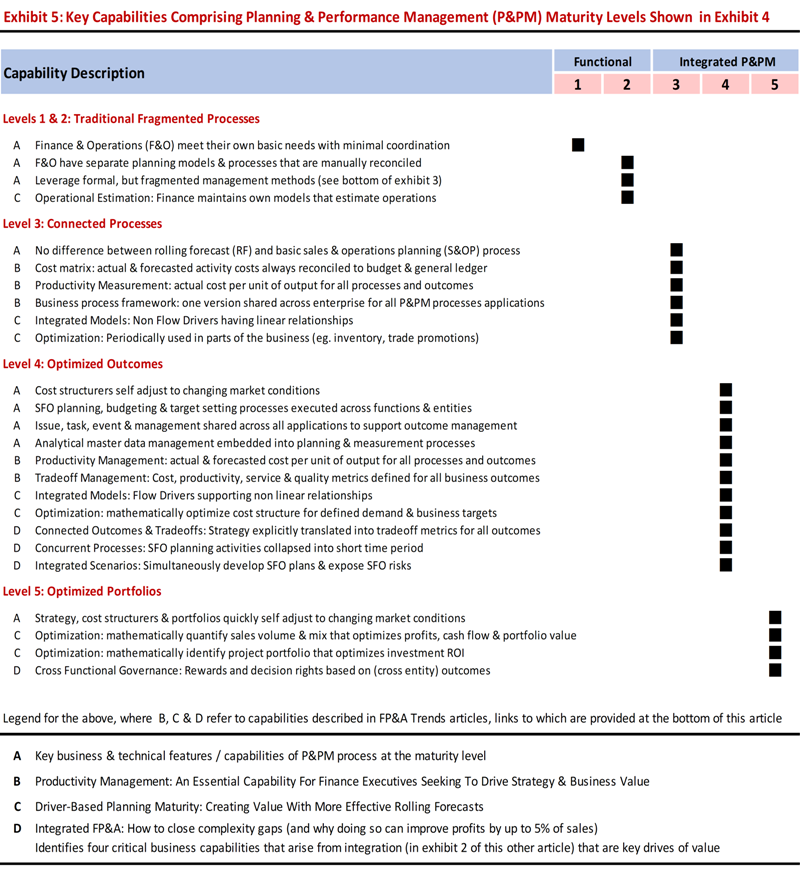
Details of the capabilities [shown above in exhibit 5] are contained in three separate FP&A Trends articles, links to which are provided at the bottom of this article. Each capability in the exhibit has a letter reference, which is described in the legend at the bottom of the exhibit. Three key insights can be gleaned from this exhibit:
- Specific capabilities [in stages 3 to 5] comprise the gaps of GMC’s processes
- Four of these capabilities [labelled “D”] are the primary gaps because they comprise the others
- The probability is high that these four capabilities are missing from IBP and IFP applications
This last point is of particular note. These four capabilities play a central role in helping global organizations manage complexity. Their absence undermines the ability to manage complexity costs. This is important because [as noted in the “ Integrated FP&A ” article] complexity costs can approach 5% of sales. In this context, these capabilities need to be a key focus of strategically focused finance executives.
Key Takeaways
Bob, like other forward-thinking finance executives, understood the importance of integrating SFO P&PM processes. Especially as a means of coping with complexity. Despite this understanding, GMC still failed to establish mature forms of integrated processes that could support their objectives. Here are four things you can learn from GMC’s experience that will help you to avoid these mistakes:
- Develop a healthy skepticism of IBP, IFP and other solutions, like those in exhibit 1. Many lack the capabilities to support mature forms of integrated processes.
- Employ a holistic approach for developing SFO P&PM processes. As GMC learned, failure to define integrated SFO processes and requirements at the outset, can lead to missed requirements and the capability gaps that they are now coping with.
- Consider the views of technology analysts, but remember that they view technologies from functional perspectives. Not from a process-driven one that brings together SFO perspectives. Without understanding this, their views can lead organizations in the wrong direction.
- Develop a shared understanding of what fully integrated P&PM processes look like, the specific capabilities that comprise them and why they are important for driving strategy and value.
This last point is especially important. Had GMC established such an understanding at the outset of their program, they could have avoided the situation in which they found themselves. In this context, the insights in this article can help to get you started in the right direction.
Related articles

The cost of complexity can be significant – upwards of 5% of sales in global organizations. Forward-thinking...

Mature driver-based planning models are an essential component of effective rolling forecast processes in complex, global...

Managing enterprise productivity is an essential capability for value-focused Finance executives. It provides the basis for...
Subscribe to FP&A Trends Digest

We will regularly update you on the latest trends and developments in FP&A. Take the opportunity to have articles written by finance thought leaders delivered directly to your inbox; watch compelling webinars; connect with like-minded professionals; and become a part of our global community.
Create new account
Financial Tips, Guides & Know-Hows
Home > Finance > What Is Business Financial Planning

What Is Business Financial Planning
Published: November 2, 2023
Discover the importance of business financial planning and how it can optimize your finances. Gain insights into finance strategies and maximize profitability.
(Many of the links in this article redirect to a specific reviewed product. Your purchase of these products through affiliate links helps to generate commission for LiveWell, at no extra cost. Learn more )
Table of Contents
Introduction, definition of business financial planning, importance of business financial planning, steps in business financial planning, components of business financial planning, benefits of business financial planning, challenges in business financial planning, considerations in business financial planning.
Welcome to our comprehensive guide on business financial planning. In today’s fast-paced and competitive business landscape, having a solid financial plan is crucial for the success and sustainability of any organization. Whether you are a small start-up or a large corporation, effectively managing your finances is a key factor in achieving profitability, growth, and long-term stability.
Financial planning for businesses involves analyzing the company’s current financial situation, setting realistic financial goals, and developing strategies to achieve those goals. It encompasses various aspects such as budgeting, forecasting, cash flow management, investment planning, risk management, and tax planning.
In this article, we will explore the definition, importance, steps, components, benefits, challenges, and considerations involved in business financial planning. By gaining a deeper understanding of these critical elements, you will be equipped with the necessary knowledge and insights to create a strong financial foundation for your organization.
Financial planning is not just for companies seeking external funding or facing financial difficulties. It is a fundamental process that applies to all businesses, regardless of their size or industry. It allows you to make informed decisions, optimize resource allocation, and seize opportunities as they arise.
Effective financial planning provides you with a roadmap to success, setting a clear direction for your business and helping you stay on track. It enables you to anticipate potential obstacles and devise strategies to overcome them, ensuring smooth operations and sustained profitability.
As we delve deeper into the world of business financial planning, it’s important to remember that every organization’s needs and circumstances are unique. While there are standard principles and best practices, it is essential to tailor your financial plan to align with your specific objectives, challenges, and resources.
Are you ready to embark on this journey of optimizing your business’s financial health? Let’s dive in and explore the exciting world of business financial planning together!
Business financial planning is the process of assessing, organizing, and managing a company’s financial resources to achieve its goals and objectives. It involves analyzing the company’s financial status, setting financial targets, and developing strategies to achieve those targets.
Financial planning also includes creating budgets, forecasting future financial performance, and monitoring cash flow, investments, and expenses. It helps businesses make informed decisions about resource allocation, capital investments, and risk management.
At its core, business financial planning aims to ensure the organization’s financial stability, growth, and long-term success. It provides a roadmap for allocating financial resources effectively, maximizing profitability, and mitigating financial risks.
Business financial planning covers various areas, including:
- Income and expense management: Monitoring and controlling the company’s revenue streams and expenses to achieve financial sustainability.
- Cash flow management: Managing the inflow and outflow of cash to ensure sufficient liquidity for day-to-day operations and future growth.
- Investment planning: Identifying investment opportunities that align with the company’s financial goals and risk tolerance.
- Debt management: Evaluating and managing the company’s debt levels to optimize financial leverage and maintain healthy financial ratios.
- Risk management: Identifying potential risks, such as market volatility or regulatory changes, and implementing strategies to mitigate their impact on the organization’s finances.
- Tax planning: Developing strategies to minimize tax liabilities and ensure compliance with applicable tax laws and regulations.
Business financial planning is an ongoing process that requires regular review and adjustment. As market conditions, financial goals, and business circumstances change, it is crucial to update and adapt the financial plan accordingly to maintain its effectiveness.
The ultimate goal of business financial planning is to optimize the company’s financial performance, enhance shareholder value, and provide a solid foundation for sustainable growth. By proactively managing the company’s finances and making informed decisions, businesses can navigate challenges, seize opportunities, and achieve their desired financial outcomes.
Business financial planning is of utmost importance for organizations of all sizes and industries. It provides a roadmap for success by guiding key financial decisions and ensuring the long-term stability and growth of the business. Here are several reasons why business financial planning is essential:
- Goal Setting and Strategic Alignment: Financial planning helps businesses set clear financial goals and align them with the overall strategic objectives of the organization. By defining specific targets, such as revenue growth or profitability ratios, businesses can track their progress and make informed decisions that drive them closer to accomplishing their goals.
- Resource Optimization: Financial planning allows businesses to plan and allocate their resources effectively. By carefully analyzing income and expenses, businesses can identify areas of inefficiency, eliminate unnecessary costs, and focus resources on initiatives that generate the highest returns. This optimization of resources leads to increased profitability and the preservation of valuable capital.
- Risk Management: One of the key benefits of financial planning is the ability to assess and mitigate risks that may impact the financial health of the business. By performing risk analysis and implementing risk management strategies, businesses can prepare for unforeseen events, such as economic downturns or industry disruptions, and minimize their potential negative impact.
- Cash Flow Management: Effective financial planning enables businesses to manage their cash flow efficiently. By forecasting future cash inflows and outflows, businesses can ensure that they have sufficient liquidity to meet their financial obligations, such as paying suppliers or employees, while also planning for future investments or expansion.
- Financial Decision-Making: Financial planning provides businesses with the necessary information and analysis to make informed financial decisions. Whether it is evaluating investment opportunities, determining pricing strategies, or deciding on financing options, a solid financial plan acts as a guiding framework, ensuring decisions are based on sound financial principles and long-term objectives.
- Stakeholder Confidence: Having a robust financial plan instills confidence in stakeholders, including investors, lenders, and shareholders. It demonstrates that the business is well-managed, financially stable, and capable of delivering on its promises. This, in turn, enhances credibility and attracts potential investors or financing opportunities.
Overall, business financial planning plays a crucial role in setting the direction, optimizing resources, and managing risks for an organization. It provides the foundation for effective financial management and decision-making, enabling businesses to navigate challenges, seize opportunities, and achieve sustainable growth in a competitive market environment.
Effective business financial planning involves a series of steps that help organizations analyze their current financial position, set financial goals, and develop strategies to achieve those goals. While each business’s financial planning process may vary based on their specific needs, here are the general steps to follow:
- Assess Current Financial Position: The first step in financial planning is to assess the company’s current financial position. This involves gathering and analyzing financial statements, such as income statements, balance sheets, and cash flow statements, to understand the company’s revenue, expenses, assets, liabilities, and cash flow. It also involves identifying any financial strengths, weaknesses, or areas for improvement.
- Set Financial Goals: Once the current financial position is evaluated, the next step is to set specific financial goals. These goals can include increasing revenue, improving profit margins, reducing costs, increasing cash flow, or achieving a specific return on investment. It is important to ensure that these goals are realistic, measurable, and aligned with the overall strategic objectives of the business.
- Develop a Budget: A budget is a crucial tool in financial planning as it helps to allocate resources and track financial performance. Based on the identified financial goals, businesses create a budget that outlines projected income, expenses, and cash flow for a specific period, typically on an annual basis. The budget should be detailed and comprehensive, accounting for all aspects of the business’s operations.
- Perform Financial Analysis: Financial analysis involves examining historical financial data and using financial ratios to assess the company’s financial health and performance. This analysis helps to identify trends, patterns, and areas of improvement. Key financial ratios to consider include liquidity ratios, profitability ratios, and solvency ratios.
- Create Financial Strategies: With a clear understanding of the current financial position, goals, and budget, businesses can develop strategies to achieve their financial objectives. These strategies may include steps to increase revenue, reduce costs, manage cash flow, optimize investments, and mitigate financial risks. The strategies should be realistic, actionable, and aligned with the overall business strategy.
- Implement and Monitor: Once the financial strategies are defined, it is important to implement them and closely monitor their progress. Regularly reviewing and comparing actual financial performance against the budget and goals helps to identify any deviations or areas requiring adjustments. This monitoring allows for timely decision-making and course correction to stay on track.
- Periodic Review and Adjustments: Financial planning is an ongoing process, and it is essential to periodically review and adjust the financial plan as business conditions change. This includes revisiting financial goals, updating the budget, and adapting strategies to reflect new opportunities or challenges. Regular reviews help businesses stay agile and responsive to the evolving market dynamics.
Following these steps in business financial planning ensures that organizations have a clear understanding of their financial position, set realistic goals, and implement strategies to achieve those goals. It provides a structured approach to financial management and enables businesses to make informed decisions for long-term success and profitability.
Business financial planning encompasses several key components that work together to create a comprehensive and effective financial strategy. These components provide the necessary framework for managing and optimizing the company’s finances. Here are the primary components of business financial planning:
- Financial Goals: Defining clear and specific financial goals is an essential component of business financial planning. Financial goals can include revenue targets, profit margins, cash flow objectives, and return on investment. These goals provide direction and purpose to the financial planning process, guiding decision-making and resource allocation.
- Budgeting: Budgeting is a critical component of financial planning that involves creating a detailed plan for income and expenses. A well-structured budget lays out projected revenue, costs, and investments over a specific period, typically on an annual basis. It helps businesses track their financial performance, allocate resources effectively, and make informed financial decisions.
- Cash Flow Management: Managing cash flow is crucial for the financial health of any business. It involves monitoring and controlling the inflow and outflow of cash to ensure there is enough liquidity to meet ongoing expenses and fund future growth. An effective cash flow management component of financial planning includes forecasting cash flow, optimizing working capital, and implementing strategies to improve cash flow efficiency.
- Financial Analysis: Financial analysis plays a pivotal role in business financial planning. It involves analyzing financial statements, ratios, and other financial data to assess the company’s financial health and performance. Key financial analysis components include liquidity ratios, profitability ratios, and solvency ratios. This analysis helps identify trends, evaluate the company’s financial strengths and weaknesses, and make data-driven financial decisions.
- Investment Planning: Investment planning focuses on identifying investment opportunities that align with the company’s financial goals and risk tolerance. This component involves evaluating potential investments, such as new projects, technology upgrades, or acquisitions, and assessing their potential returns and risks. Effective investment planning allows businesses to allocate resources wisely to maximize profitability and long-term growth.
- Risk Management: Risk management is an integral part of financial planning that involves identifying and mitigating financial risks that can impact the company’s finances. This component includes assessing market risks, legal and regulatory risks, credit risks, and operational risks. Implementing risk management strategies, such as insurance coverage or hedging techniques, helps businesses protect their financial stability and minimize potential losses.
- Tax Planning: Tax planning is an essential component of financial planning that involves developing strategies to minimize tax liabilities while maintaining compliance with tax laws and regulations. This includes understanding tax incentives, deductions, and credits, as well as effectively managing tax reporting and documentation. Effective tax planning ensures businesses optimize their tax positions and maximize after-tax profitability.
By integrating these components into their financial planning process, businesses can create a comprehensive and dynamic strategy that addresses their financial goals, manages cash flow, analyzes performance, minimizes risks, and optimizes investments. Each component contributes to the overall financial health and success of the organization, helping businesses navigate challenges, seize opportunities, and achieve sustainable growth.
Business financial planning offers several significant benefits to organizations of all sizes and industries. It serves as a fundamental tool for managing and optimizing financial resources, making informed decisions, and achieving long-term success. Here are some key benefits of business financial planning:
- Goal Clarity and Focus: Financial planning helps businesses set clear financial goals and objectives. By defining specific targets, businesses can align their efforts and resources towards achieving those goals. It brings clarity and focus to the organization, providing a sense of direction and purpose.
- Resource Optimization: A well-developed financial plan enables businesses to allocate their resources effectively. It helps identify areas of inefficiency, wasteful spending, or underutilization of resources. Through financial planning, organizations can optimize their resource allocation, reduce costs, and maximize profitability.
- Risk Management: Financial planning incorporates risk management strategies that help businesses identify and mitigate potential risks. It enables companies to anticipate and prepare for unforeseen events, such as economic downturns, regulatory changes, or supply chain disruptions. By mitigating risks, businesses can protect their financial stability and minimize potential losses.
- Sustainable Growth: Financial planning is crucial for sustained business growth. It allows organizations to assess their financial position, identify growth opportunities, and develop strategies to capitalize on them. By setting achievable financial goals, businesses can expand their market share, enter new markets, invest in research and development, and drive long-term growth.
- Better Decision-making: Financial planning provides businesses with a solid foundation for making informed decisions. By analyzing financial data, evaluating risk factors, and considering various scenarios, businesses can make strategic decisions that align with their financial goals. This leads to better investment choices, pricing strategies, and capital allocation.
- Improved Cash Flow: Effective financial planning helps businesses manage their cash flow efficiently. It involves forecasting cash inflows and outflows, optimizing working capital, and ensuring sufficient liquidity for day-to-day operations and growth initiatives. Improved cash flow management enables businesses to meet financial obligations, seize opportunities, and maintain financial stability.
- Enhanced Credibility: Financial planning enhances a business’s credibility and reputation with stakeholders, including investors, lenders, and customers. It demonstrates that the organization is well-managed, financially stable, and has a clear vision for the future. This credibility attracts potential investors, lenders, and partners, opening doors to new growth opportunities.
Overall, business financial planning plays a vital role in guiding organizations towards financial success and sustainability. It provides a framework for goal setting, resource optimization, risk management, and decision-making. By implementing effective financial planning strategies, businesses can navigate challenges, seize opportunities, and achieve their desired financial outcomes.
While business financial planning is crucial for success, it is not without its challenges. Organizations must navigate various obstacles to develop and implement effective financial plans. Here are some common challenges in business financial planning:
- Data Accuracy and Availability: Financial planning heavily relies on accurate and up-to-date financial data. However, obtaining reliable and comprehensive data can be a challenge, especially for small businesses or those with inadequate financial reporting systems. Without accurate data, it becomes difficult to perform accurate financial analysis and make informed decisions.
- Uncertain Economic Climate: The ever-changing economic landscape poses a challenge in financial planning. Businesses need to adapt their financial plans to account for economic fluctuations, changes in market trends, and shifts in consumer behavior. Uncertainty, such as recessions, inflation, or global crises, can impact revenue streams, cash flow, and profitability, making financial planning more complex.
- Complexity of Financial Regulations: Compliance with financial regulations is a significant challenge in financial planning. Businesses must stay abreast of constantly evolving regulations, tax laws, and reporting requirements. Failure to comply can result in penalties, legal issues, and reputational damage. Ensuring accuracy and compliance while navigating a complex regulatory environment adds complexity to the financial planning process.
- Difficulty in Forecasting: Forecasting future financial performance is integral to financial planning. However, accurately predicting future events, such as sales growth, market demand, or industry trends, can be challenging. External factors like changing customer preferences or new competitors can impact revenue projections, making it difficult to create realistic financial forecasts.
- Limited Resources: Limited financial and human resources can pose challenges in financial planning. Small businesses often face constraints in hiring dedicated financial professionals or investing in sophisticated financial planning tools. Lack of expertise and resources can hinder the ability to develop and execute robust financial plans.
- Inadequate Communication and Collaboration: Financial planning requires collaboration across different departments and stakeholders within an organization. Ineffective communication and collaboration can lead to misalignment between financial goals, operations, and strategic objectives. It is essential to foster effective communication channels and ensure all stakeholders are involved in the financial planning process.
- External Factors: External factors beyond a business’s control, such as political instability, natural disasters, or shifts in the global economy, can impact financial planning. These unforeseen events can disrupt supply chains, affect customer demand, or create financial instability. Adapting financial plans to mitigate the impact of external factors is a challenge that businesses must navigate.
Despite the challenges, businesses can overcome them by adopting proactive measures. Implementing robust financial systems, investing in accurate data collection and reporting tools, staying informed about regulatory changes, and fostering effective communication can help organizations navigate these challenges and develop resilient financial plans.
When embarking on business financial planning, there are several important considerations to keep in mind. These considerations help ensure that the financial plan is comprehensive, realistic, and tailored to the specific needs of the organization. Here are key factors to consider in business financial planning:
- Business Objectives: Align financial planning with the overall strategic objectives of the business. The financial plan should support and contribute to the achievement of the organization’s goals, whether it is revenue growth, market expansion, profitability, or sustainability.
- Risk Tolerance: Understand the risk tolerance of the business and factor it into the financial plan. Different businesses have varying levels of risk appetite, and the financial plan should account for this. It should include risk management strategies that align with the organization’s risk tolerance and protect against potential financial setbacks.
- Industry and Market Conditions: Consider the specific industry and market conditions in which the business operates. Market trends, customer preferences, competitive landscape, and regulatory environment all impact financial planning. Keeping abreast of industry dynamics helps in making informed financial decisions and formulating realistic financial projections.
- Customer and Supplier Relationships: Analyze the relationships with customers and suppliers to understand their impact on the financial health of the business. Ensure financial planning accounts for any dependencies, credit terms, payment schedules, and potential risks associated with these relationships.
- Technology and Systems: Assess the technology infrastructure and financial systems in place to support financial planning. Evaluate whether the existing systems are capable of providing accurate and timely financial data for analysis. Consider whether any upgrades or investments in technology are needed to enhance financial planning capabilities.
- Competencies and Resources: Evaluate the financial competencies and resources within the organization. Determine if the current finance team has the necessary expertise to develop and execute the financial plan effectively. Identify any gaps and consider training or hiring new talent to strengthen financial planning capabilities.
- Long-term Sustainability: Consider long-term sustainability when creating the financial plan. Beyond short-term goals, it is crucial to analyze the impact of financial decisions on the overall financial health and viability of the business in the long run. Balancing short-term objectives with long-term sustainability is essential for sustained growth and profitability.
- Regulatory Compliance: Stay informed about relevant financial regulations, tax laws, and reporting requirements. Ensure the financial plan complies with all applicable regulations. Consult with legal and financial experts, if necessary, to ensure compliance and mitigate any potential legal or financial risks.
By considering these factors in business financial planning, organizations can develop a comprehensive and tailored financial strategy that addresses their unique circumstances. Regularly reviewing and updating the financial plan in response to changes in these considerations ensures that the plan remains relevant and effective in driving the organization towards its financial goals.
Business financial planning is a crucial process that organizations must undertake to navigate the complex world of finance and achieve their goals. From setting clear financial objectives to creating budgets, managing cash flow, and analyzing financial performance, financial planning forms the foundation for informed decision-making and long-term success.
Throughout this comprehensive guide, we have explored the definition, importance, steps, components, benefits, challenges, and considerations of business financial planning. We have seen how financial planning helps businesses clarify their goals, optimize resources, mitigate risks, and make strategic financial decisions.
By engaging in financial planning, businesses can set the stage for sustainable growth, enhanced profitability, and improved financial stability. It empowers organizations to allocate resources effectively, manage cash flow efficiently, and respond to changes in the economic, market, and regulatory environment.
However, financial planning is not without its challenges. Obtaining accurate data, forecasting future performance, complying with regulations, and managing limited resources are some of the obstacles businesses may face. Despite these challenges, businesses can overcome them through proactive measures such as investing in technology, fostering effective communication, and staying informed about industry trends.
As you embark on your own financial planning journey, remember that flexibility and adaptability are key. Regularly review and update your financial plan, considering factors such as market conditions, customer relationships, and long-term sustainability. By doing so, you can ensure that your financial plan remains relevant and responsive to the evolving needs of your organization.
In conclusion, business financial planning is a dynamic and essential process that enables organizations to effectively manage their financial resources and achieve their strategic objectives. By integrating financial planning into your business strategy, you lay the groundwork for sustainable growth, profitability, and long-term success in today’s competitive business landscape.
How To Start A Financial Planning Business
Our Review on The Credit One Credit Card
20 Quick Tips To Saving Your Way To A Million Dollars
What Are Asset Management Ratios
How Retainers And Draws Work In Money Management
Latest articles.
Understanding XRP’s Role in the Future of Money Transfers
Written By:
Navigating Post-Accident Challenges with Automobile Accident Lawyers
Navigating Disability Benefits Denial in Philadelphia: How a Disability Lawyer Can Help
Preparing for the Unexpected: Building a Robust Insurance Strategy for Your Business
Custom Marketplace Development: Creating Unique Online Shopping Experiences
Related post.

By: • Finance

By: Chelsea • Finance

Please accept our Privacy Policy.
We uses cookies to improve your experience and to show you personalized ads. Please review our privacy policy by clicking here .
- https://livewell.com/finance/what-is-business-financial-planning/
Everything that you need to know to start your own business. From business ideas to researching the competition.
Practical and real-world advice on how to run your business — from managing employees to keeping the books.
Our best expert advice on how to grow your business — from attracting new customers to keeping existing customers happy and having the capital to do it.
Entrepreneurs and industry leaders share their best advice on how to take your company to the next level.
- Business Ideas
- Human Resources
- Business Financing
- Growth Studio
- Ask the Board
Looking for your local chamber?
Interested in partnering with us?
Run » finance, what is the difference between accounting and financial planning .
Accounting and financial planning both have a role to play in growing your business sustainably.

Accounting and financial planning are two different areas of expertise that many business owners conflate. However, hiring a financial planner to do your accounting isn’t the best idea. These disciplines may overlap in the process of running your business, but you shouldn’t be picking one function over the other. Here’s a quick guide to the different roles accounting and financial planning play in your business.
Accounting and financial management both have to do with managing your business assets, but from different perspectives. “Accounting provides a snapshot of an organization’s financial situation using past and present transactional data, while finance is inherently forward-looking; all value comes from the future,” wrote Harvard Business School Online .
Accounting is primarily concerned with tracking and recording income, expenses, assets, and liabilities. Accountants prepare documents such as income statements and balance sheets that offer a snapshot of the company's financial health at a specific point in time.
Comparatively, financial planning focuses on strategies to achieve long-term financial goals. Small business owners hire financial planners to assess their current financial situations, risk tolerance, and goals. These planners can help a startup determine how much funding to raise, plan for major expenses (like an expansion), or mitigate risks.
[Read more: How to Create a Financial Forecast for a Startup Business Plan ]
Key activities
Accountants and financial planners do very different things on a day-to-day basis. Accountants manage tasks such as bookkeeping , tracking revenue and expenses, financial and internal reporting, auditing, and risk management. “An accountant records, summarizes, analyzes, and creates reports of financial transactions,” wrote Investopedia .
A financial planner is more concerned with funding the business. This role includes activities such as raising capital, corporate strategy, budgeting and forecasting, and overseeing mergers and acquisitions. Financial planning aims to get the best risk-adjusted returns and will track metrics like cash flow, profit margin, and cost of capital.
Accounting is like looking in the rearview mirror to get a clear view of your business’s financial track record. Financial planning takes a view through the windshield, helping you navigate toward your desired financial future.
Measuring financial performance
Speaking of key metrics, accounting and finance have different approaches to measuring financial performance. Accounting uses the accrual method, which records transactions as they are agreed upon rather than when they are completed. This means your business can allow customers to use credit cards or payment plans. The philosophy behind accrual accounting is that revenues and costs will “ smooth out ” over time to show an accurate snapshot of a company’s financial health.
[Read more: Accounting Basics Every New Business Owner Should Learn ]
“Finance rejects that idea, instead believing that the best way to measure economic returns from a company is to calculate the cash it’s able to produce and leverage, which is dependent on when that cash is exchanged—rather than just agreed upon,” wrote Harvard Business School Online .
Finance instead uses metrics like net profit margin to understand business performance.
Tools and skill sets
Accounting teams use tools to establish a record of the company’s finances that can be used in tax audits and reporting. Accounting compiles data in a general ledger, where all transactions across the company’s supply chain, procurement, payments, and other functions are kept in one place. Accountants use accounting software and spreadsheets extensively to record accounts payable and receivable.
Financial planners use the same information for financial projections. Financial teams use historical data generated by accountants with market data and industry trends to chart a path forward. “While a financial planner must be good with numbers and possess a keen understanding of how the markets work, it is arguably more important to have strong sales and networking skills,” wrote Investopedia .
Ultimately, financial planning and accounting are both core functions of a growing business. Accounting is like looking in the rearview mirror to get a clear view of your business’s financial track record. Financial planning takes a view through the windshield, helping you navigate toward your desired financial future.
CO— aims to bring you inspiration from leading respected experts. However, before making any business decision, you should consult a professional who can advise you based on your individual situation.
CO—is committed to helping you start, run and grow your small business. Learn more about the benefits of small business membership in the U.S. Chamber of Commerce, here .

Subscribe to our newsletter, Midnight Oil
Expert business advice, news, and trends, delivered weekly
By signing up you agree to the CO— Privacy Policy. You can opt out anytime.
For more finance tips
What is enterprise resource planning, choosing an enterprise resource planning tool for your small business, 10 benefits of erp systems for small businesses.
By continuing on our website, you agree to our use of cookies for statistical and personalisation purposes. Know More
Welcome to CO—
Designed for business owners, CO— is a site that connects like minds and delivers actionable insights for next-level growth.
U.S. Chamber of Commerce 1615 H Street, NW Washington, DC 20062
Social links
Looking for local chamber, stay in touch.

- Business Financial Planning: How to Create Business Financial Plan
- Post author: fincart
- Post published: January 8, 2024
- Post category: Financial Planning
Table of Contents
In this fast and competitive world, the success of a business depends on how prepared they are. Prepared to adapt, to keep up with rivals, to handle the unexpected, and to seize opportunities as they arise. Through Business Financial Planning, businesses can fortify their foundation for success. They can gain insights by making use of their past performance data, their current situation, and trends to make predictions about future performances. They can make efficient use of their resources to maximise profit and wealth to keep all stakeholders happy. Since financial planning is so important for businesses, they hire a business financial consultant to help create a solid financial plan for sustained, long-term growth.
In this blog, let us understand the meaning of business financial planning, how it benefits businesses, how you can create a financial plan for your business, and see how different business financial plans are from individual ones.
What is Business Financial Planning?
With business financial planning, you create the blueprint for your business’s financial future. It details the financial management of your overall business plan. Through it, you decide the allocation of resources, monitor cash flows, decide the budget, manage liabilities, make projections and forecasts, manage risk, and much more, ultimately improving efficiency and achieving your short and long-term business goals. Basically, doing financial planning for business gives you insights to make smart and sustainable decisions. It is a comprehensive approach that ensures that your business not only survives but thrives in the ever-changing market dynamics. It needs to be strong and built on a solid foundation because when you try to grow your business and seek investors or loans, your financial plan will become the bedrock of credibility and confidence.
The importance of financial planning in business
For any business, the Importance of Financial Planning cannot be overstated. It is essential to the success of any business. Here’s why –
- Through financial planning, entrepreneurs gain insights that keep them informed and improve their decision-making.
- A financial plan outlines the business strategies that an entrepreneur will use over the course of the next month, quarter, or financial year.
- Entrepreneurs can use financial plans to assess their past and current situation, the progress of their goals, and their resources. It helps them keep track of their financial performance, identify areas of improvement, and make informed decisions to ensure the optimal allocation of resources for sustained growth and success.
- When the resources are optimally allocated, business owners can increase their profitability and sustainability.
- Financial plans can also help identify risk areas in advance which enables business owners to develop strategies to mitigate them.
- If you are a new business owner or are looking to start a business, it’s important to seek guidance from experts. A business financial planner can make sure you cover every essential component in your plan and ensure it aligns with your business goals.
- Consider the local aspects of your business and ask yourself, “Can a business financial advisor near me help me get started with my financial planning?” With help from a local business financial consultant, you will receive personalised insights tailored to the specific needs and challenges of your new venture while keeping in mind the competition and market trends in your area.
- Explore different business finance consulting services, and leverage the expertise of professionals who can help your business grow and succeed.
Benefits of financial planning for business
A well-crafted business financial plan lays the foundation for stable growth. Let’s list down some ways in which making a financial plan can benefit your business –
1. Cash Flow Management
As the name suggests, cash flow refers to the money coming in and out of your business. Usually, when a business is new, it will spend more money than it will earn, so your expectations about cash flow should be realistic. Through a financial plan, you will be able to forecast and manage cash flows effectively and avoid underflows or overflows.
2. Risk Management
A business faces many different types of financial risks , such as credit risk, liquidity risk, legal risk, operational risk, systematic risk, and market risk. A financial plan helps a business stay prepared for such dangers through forecasts and scenario planning. It will also compel you to create contingencies to tackle unexpected circumstances.
3. Creates Transparency
A financial plan creates transparency among investors, executives, and employees. If you want to hire good employees, they would want to know how stable your business is, and how likely it is to succeed in the future. A good and transparent financial plan attracts investors and high-quality employees.
4. Cost Reduction
A part of your financial plan is your budget. When you assess your expenses, you will likely find areas where you can make cuts to save more money. Cost cutting will help your bottom line and make sure you utilise your resources more efficiently.
Also Read: What is Cost Reduction Strategy? A complete Guide
5. Funding Opportunities
A solid financial plan enhances your credibility and attracts potential investors. Investors will see how their money will be used and study your past performances. Similarly, if your business needs loans, banks will scrutinise your liabilities and how you’ve managed them. A good financial plan can ensure your business gets all the funding it needs.
6. Crisis Management
Through projections, forecasts, and scenario planning, you will see any financial crisis coming from far away. But there are cases when extremely unexpected events happen, such as the 2008 global economic crisis, or the COVID pandemic. A well-prepared financial plan not only enables you to identify potential crises in advance but also equips you with contingency measures to deal with such events. This includes having a comprehensive risk mitigation strategy, maintaining a sufficient cash reserve, and establishing clear communication to keep stakeholders informed.
7. Professional Guidance
These benefits highlight why businesses invest heavily in business finance consulting services. Seeking guidance from a business financial consultant comes with its own advantages, the first being benefiting from the specialised knowledge and experience of financial professionals. A business financial planner can also tailor your financial plan according to the unique needs and goals of your business, and help you by regularly reviewing and adapting your financial plan to changes in the market.
Steps to Develop a Business Financial Plan
Creating effective financial plans for businesses demands a thoughtful approach, honest assessment, and careful implementation. Understand that this plan is going to be your guide for the future, and how closely and effectively you follow it will determine whether or not you achieve your business goals. Here are three simple steps you can take to start creating a successful business financial plan –
A. Setting Financial Goals:
Start by setting attainable short-term and long-term financial goals that are aligned with your business vision. These objectives should be clear, measurable, and defined with a time horizon. Ask yourself some questions – Where do I want my business to be in the next year or five? Do I plan to expand my business? If so, in how many years? Do I want to hit a specific revenue target to attract investors? Be specific with your questions, as the answers will help you set realistic goals. Establishing such goals will provide a strategic framework and help you focus your financial efforts and resources toward specific milestones, which will ultimately steer your business in the direction you wanted and planned for.
B. Budgeting Techniques
A budget can help you dictate the flow of cash. It is a framework that includes your total income, total expenses, and investments and reserves. Assess your situation and note down all your income and its sources, such as sales income, investments, donors, investors, or other revenue streams. Now take a thorough look at your expenses such as daily operational costs, marketing, advertising, employee salaries, research and development of products, equipment, and technology. Of course, if you want to profit, your revenue should exceed all your expenses. A budget helps with exactly this, and more. It will allow you to allocate resources to different departments efficiently. It is essentially a constraint, and everyone must work within it. When you break down your budget, you’ll find it easy to track and manage it.
Also Read: Understanding Budgeting in Financial Management
C. Forecasting and Projections:
Now you have to create financial projections for different components such as income statements or balance sheets. These take into account the past performance, market trends, expenses you are expecting, and your sales forecast for the next month, quarter, or year. If you own a business that works with a very tight cash flow, you can also consider making a weekly projection.
Financial projections are important as they are shared with stakeholders, and help you navigate uncertainties and make sure that you remain on track toward your business goals. Take a look at your goals and work out how much it will cost you to reach them. Do this for a variety of scenarios – best case, worst case, or likely scenarios. This comprehensive scenario planning will help you stay prepared for any challenges and improve your decision-making.
Other than these steps you should make sure to plan for contingencies. Even though forecasts and projections give you a good idea of where you’re likely headed, they can’t predict the future. The world of finance especially is full of uncertainties, and a business should be prepared for them.
Make sure you have a decently sized cash reserve during slow periods or market downturns. Other things include making sure you have access to quick credit lines and liquid assets. Remember that financial planning doesn’t just stop after you craft the document. It is a continuous process, which means you should monitor and review your plan regularly and accordingly make adjustments.
Individual vs. Business Financial Plans
Here is how a business financial plan differs from that of an individual:
Conclusion:
Every business financial plan should clearly state three things – How the business will make its money, what it needs to do to achieve its goals, and its operational budget. We’ve seen the many benefits of a business financial plan, and how assessment, financial goals, budgeting, and projections can help you craft one. We’ve also seen that financial planning for business is a lot more complex and bigger in scope than individual financial planning. As a business owner, you will be answerable to your investors, employees, banks, and other stakeholders, so your financial plan needs to be transparent and have a solid base.
It would be wise for any business owner to consult with a business financial advisor. This professional guidance can provide valuable insights and expertise while crafting a comprehensive financial plan that is suited to your specific industry, goals, and competition. Their expertise will also help you with other aspects, such as risk management, investment decisions, and your optimising capital structure. By having them by your side, you can make informed decisions, and ensure the financial stability and growth of your business.
You Might Also Like

Gold VS Silver: Which is Better as an Investment?

How to Start Financial Planning in Your 40s?

What Are Some Golden Rules Of Financial Planning/Investment Strategies?

- Creating a Small Business Financial Plan

Written by True Tamplin, BSc, CEPF®
Reviewed by subject matter experts.
Updated on September 02, 2023
Get Any Financial Question Answered
Table of contents, financial plan overview.
A financial plan is a comprehensive document that charts a business's monetary objectives and the strategies to achieve them. It encapsulates everything from budgeting and forecasting to investments and resource allocation.
For small businesses, a solid financial plan provides direction, helping them navigate economic challenges, capitalize on opportunities, and ensure sustainable growth.
The strength of a financial plan lies in its ability to offer a clear roadmap for businesses.
Especially for small businesses that may not have a vast reserve of resources, prioritizing financial goals and understanding where every dollar goes can be the difference between growth and stagnation.
It lends clarity, ensures informed decision-making, and sets the stage for profitability and success.
Understanding the Basics of Financial Planning for Small Businesses
Role of financial planning in business success.
Financial planning is the backbone of any successful business endeavor. It serves as a compass, guiding businesses toward profitability, stability, and growth.
With proper financial planning, businesses can anticipate potential cash shortfalls, make informed investment decisions, and ensure they have the capital needed to seize new opportunities.
For small businesses, in particular, tight financial planning can mean the difference between thriving and shuttering. Given the limited resources, it's vital to maximize every dollar and anticipate financial challenges.
Through diligent planning, small businesses can position themselves competitively, adapt to market changes, and drive consistent growth.
Core Components of a Financial Plan for Small Businesses
Every financial plan comprises several core components that, together, provide a holistic view of a business's financial health and direction. These include setting clear objectives, estimating costs , preparing financial statements , and considering sources of financing.
Each component plays a pivotal role in ensuring a thorough and actionable financial strategy .
For small businesses, these components often need a more granular approach. Given the scale of operations, even minor financial missteps can have significant repercussions.
As such, it's essential to tailor each component, ensuring they address specific challenges and opportunities that small businesses face, from initial startup costs to revenue forecasting and budgetary constraints.
Setting Clear Small Business Financial Objectives
Identifying business's short-term and long-term financial goals.
Every business venture starts with a vision. Translating this vision into actionable financial goals is the essence of effective planning.
Short-term goals could range from securing initial funding and achieving a set monthly revenue to covering startup costs. These targets, usually spanning a year or less, set the immediate direction for the business.
On the other hand, long-term financial goals delve into the broader horizon. They might encompass aspirations like expanding to new locations, diversifying product lines, or achieving a specific market share within a decade.
By segmenting goals into short-term and long-term, businesses can craft a step-by-step strategy, making the larger vision more attainable and manageable.
Understanding the Difference Between Profitability and Cash Flow
Profitability and cash flow, while closely linked, are distinct concepts in the financial realm. Profitability pertains to the ability of a business to generate a surplus after deducting all expenses.
It's a metric of success and indicates the viability of a business model . Simply put, it answers whether a business is making more than it spends.
In contrast, cash flow represents the inflow and outflow of cash within a business. A company might be profitable on paper yet struggle with cash flow if, for instance, clients delay payments or unexpected expenses arise.
For small businesses, maintaining positive cash flow is paramount. It ensures that they can cover operational costs, pay employees, and reinvest in growth, even if they're awaiting payments or navigating financial hiccups.
Estimating Small Business Startup Costs (for New Businesses)
Fixed vs variable costs.
When embarking on a new business venture, understanding costs is paramount. Fixed costs remain consistent regardless of production levels. They include expenses like rent, salaries, and insurance . These are predictable outlays that don't fluctuate with business performance.
Variable costs , conversely, change in direct proportion to production or business activity. Think of costs associated with materials for manufacturing or commission for sales .
For a startup, delineating between fixed and variable costs aids in crafting a more dynamic budget, allowing for adaptability as the business scales and evolves.
One-Time Expenditures vs Ongoing Expenses
Startups often grapple with numerous upfront costs. From purchasing equipment and setting up a workspace to initial marketing campaigns, these one-time expenditures lay the foundation for business operations.
They differ from ongoing expenses like utility bills, raw materials, or employee wages that recur monthly or annually.
For a small business owner, distinguishing between these costs is critical. One-time expenditures often demand a larger chunk of initial capital, while ongoing expenses shape the monthly and annual budget.
By categorizing them separately, businesses can strategize funding needs more effectively, ensuring they're equipped to meet both immediate and recurrent financial obligations.
Funding Sources for Small Businesses
Personal savings.
This is often the most straightforward way to fund a startup. Entrepreneurs tap into their personal savings accounts to jumpstart their business.
While this method has the benefit of not incurring debt or diluting company ownership, it intertwines the individual's personal financial security with the business's fate.
The entrepreneur must be prepared for potential losses, and there's the evident psychological strain of putting one's hard-earned money on the line.
Loans can be sourced from various institutions, from traditional banks to credit unions . They offer a substantial sum of money that can be paid back over time, usually with interest .
The main advantage of taking a loan is that the entrepreneur retains full ownership and control of the business.
However, there's the obligation of monthly repayments, which can strain a business's cash flow, especially in its early days. Additionally, securing a loan often requires collateral and a sound credit history.
Investors, including angel investors and venture capitalists , offer capital in exchange for equity or a stake in the company.
Angel investors are typically high-net-worth individuals who provide funding in the initial stages, while venture capitalists come in when there's proven business potential, often injecting larger sums. The advantage is substantial funding without the immediate pressure of repayments.
However, in exchange for their investment, they often seek a say in business decisions, which might mean compromising on some aspects of the original business vision.
Grants are essentially 'free money' often provided by government programs, non-profit organizations, or corporations to promote innovation and support businesses in specific sectors.
The primary advantage of grants is that they don't need to be repaid, nor do they dilute company ownership. However, they can be highly competitive and might come with stipulations on how the funds should be used.
Moreover, the application process can be lengthy and requires showcasing the business's potential or alignment with the specific goals or missions of the granting institution.
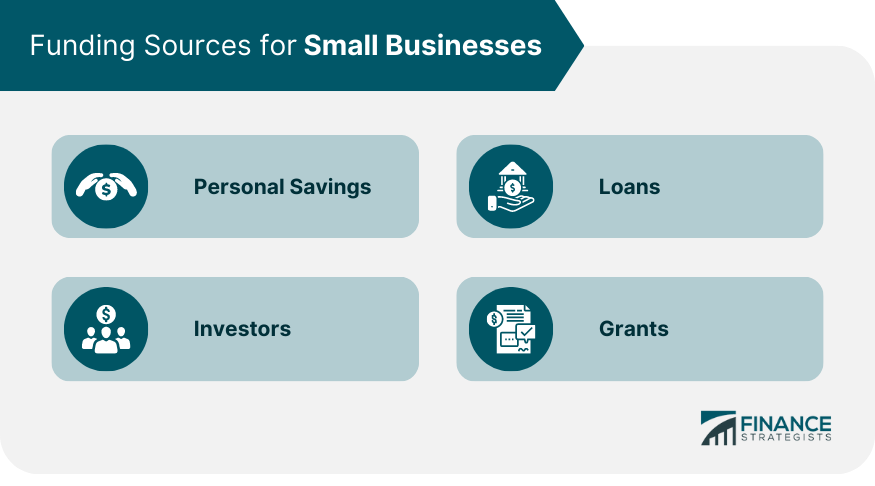
Preparing Key Financial Statements for Small Businesses
Income statement (profit & loss).
An Income Statement , often termed as the Profit & Loss statement , showcases a business's financial performance over a specific time frame. It details revenues , expenses, and ultimately, profits or losses.
By analyzing this statement, business owners can pinpoint revenue drivers, identify exorbitant costs, and understand the net result of their operations.
For small businesses, this document is instrumental in making informed decisions. For instance, if a certain product line is consistently unprofitable, it might be prudent to discontinue it. Conversely, if another segment is thriving, it might warrant further investment.
The Income Statement, thus, serves as a financial mirror, reflecting the outcomes of business strategies and decisions.
Balance Sheet
The Balance Sheet offers a snapshot of a company's assets , liabilities , and equity at a specific point in time.
Assets include everything the business owns, from physical items like equipment to intangible assets like patents .
Liabilities, on the other hand, encompass what the company owes, be it bank loans or unpaid bills.
Equity represents the owner's stake in the business, calculated as assets minus liabilities.
This statement is crucial for small businesses as it offers insights into their financial health. A robust asset base, minimal liabilities, and growing equity signify a thriving enterprise.
In contrast, mounting liabilities or dwindling assets could be red flags, signaling the need for intervention and strategy recalibration.
Cash Flow Statement
While the Income Statement reveals profitability, the Cash Flow Statement tracks the actual movement of money.
It categorizes cash flows into operating (day-to-day business), investing (buying/selling assets), and financing (loans or equity transactions) activities. This statement unveils the liquidity of a business, indicating whether it has sufficient cash to meet immediate obligations.
For small businesses, maintaining positive cash flow is often more vital than showcasing profitability.
After all, a business might be profitable on paper yet struggle if clients delay payments or unforeseen expenses emerge.
By regularly reviewing the Cash Flow Statement, small business owners can anticipate cash crunches and strategize accordingly, ensuring seamless operations irrespective of revenue cycles.
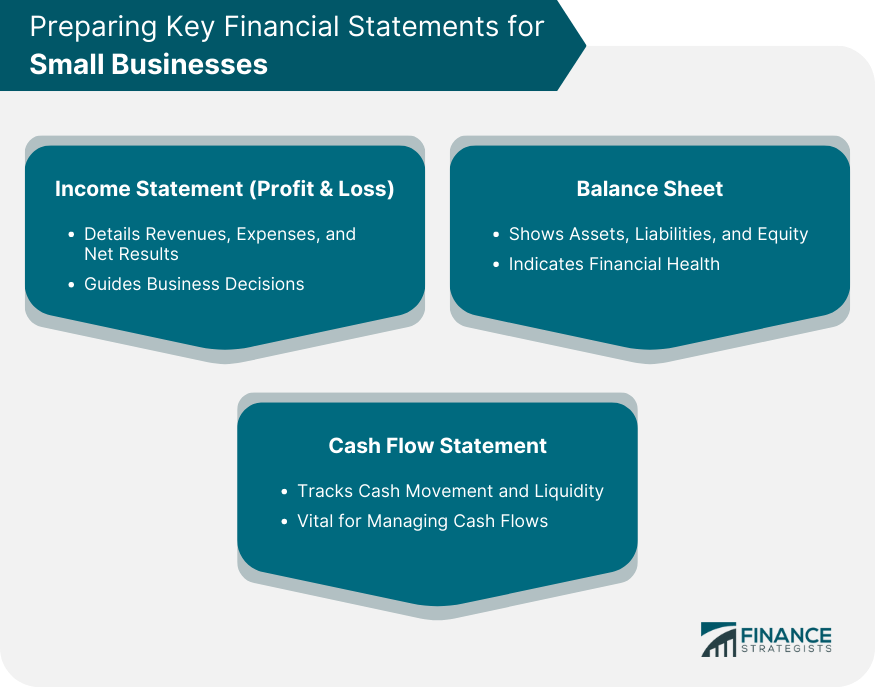
Small Business Budgeting and Expense Management
Importance of budgeting for a small business.
Budgeting is the financial blueprint for any business, detailing anticipated revenues and expenses for a forthcoming period. It's a proactive approach, enabling businesses to allocate resources efficiently, plan for investments, and prepare for potential financial challenges.
For small businesses, a meticulous budget is often the linchpin of stability, ensuring they operate within their means and avoid financial pitfalls.
Having a well-defined budget also fosters discipline. It curtails frivolous spending, emphasizes cost-efficiency, and sets clear financial boundaries.
For small businesses, where every dollar counts, a stringent budget is the gateway to financial prudence, ensuring that funds are utilized judiciously, fostering growth, and minimizing wastage.
Strategies for Reducing Costs and Optimizing Expenses
Bulk purchasing.
When businesses buy supplies in large quantities, they often benefit from discounts due to economies of scale . This can significantly reduce per-unit costs.
However, while bulk purchasing leads to immediate savings, businesses must ensure they have adequate storage and that the products won't expire or become obsolete before they're used.
Renegotiating Vendor Contracts
Regularly reviewing and renegotiating contracts with suppliers or service providers can lead to better terms and lower costs. This might involve exploring volume discounts, longer payment terms, or even bartering services.
Building strong relationships with vendors often paves the way for such negotiations.
Adopting Energy-Saving Measures
Simple changes, like switching to LED lighting or investing in energy-efficient appliances, can lead to long-term savings in utility bills. Moreover, energy conservation not only reduces costs but also minimizes the environmental footprint, which can enhance the business's reputation.
Embracing Technology
Modern software and technology can streamline business processes. Automation tools can handle repetitive tasks, reducing labor costs.
Meanwhile, data analytics tools can provide insights into customer preferences and behavior, ensuring that marketing budgets are used effectively and target the right audience.
Streamlining Operations
Regularly reviewing and refining business processes can eliminate redundancies and improve efficiency. This might mean merging roles, cutting down on unnecessary meetings, or simplifying supply chains. A leaner operation often translates to reduced expenses.
Outsourcing Non-core Tasks
Instead of maintaining an in-house team for every function, businesses can outsource tasks that aren't central to their operations.
For instance, functions like accounting , IT support, or digital marketing can be outsourced to specialized agencies, often leading to cost savings and access to expert skills.
Cultivating a Culture of Frugality
Encouraging employees to adopt a cost-conscious mindset can lead to collective savings. This can be fostered through incentives, regular training, or even simple practices like recycling and reusing office supplies.
When everyone in the organization is attuned to the importance of cost savings, the cumulative effect can be substantial.
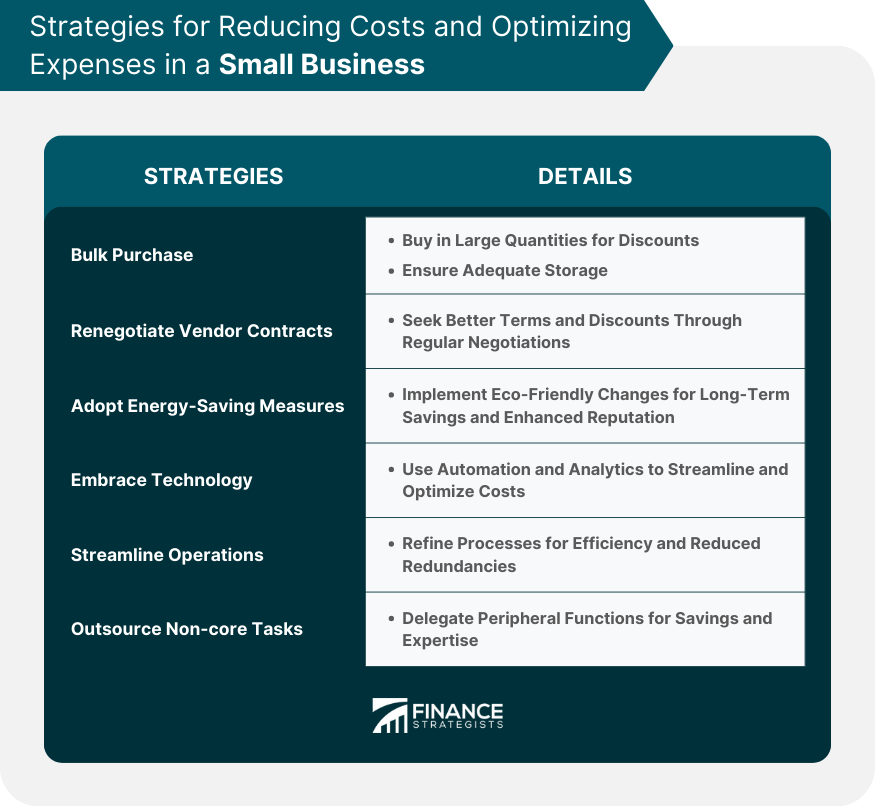
Forecasting Small Business Revenue and Cash Flow
Techniques for predicting future sales in a small business, past sales data analysis.
Historical sales data is a foundational element in any forecasting effort. By reviewing previous sales figures, businesses can identify patterns, understand seasonal fluctuations, and recognize the effects of past initiatives.
This information offers a baseline upon which to build future projections, accounting for known recurring variables in the business cycle .
Market Research
Understanding the larger market dynamics is crucial for accurate forecasting. This involves tracking industry trends, monitoring shifts in consumer behavior, and being aware of potential market disruptions.
For instance, a sudden technological advancement can change consumer preferences or regulatory changes might impact an industry.
Local Trend Analysis
For small businesses, localized insights can be especially impactful. Observing local competitors, understanding regional consumer preferences, or noting shifts in the local economy can offer precise data points.
These granular details, when integrated into a larger forecasting model, can enhance prediction accuracy.
Customer Feedback
Direct feedback from customers is an invaluable source of insights. Surveys, focus groups, or even informal chats can reveal customer sentiments, preferences, and potential future purchasing behavior.
For instance, if a majority of loyal customers express interest in a new product or service, it can be indicative of future sales potential.
Moving Averages
This technique involves analyzing a series of data points (like monthly sales) by creating averages from different subsets of the full data set.
For yearly forecasting, a 12-month moving average can be used to smooth out short-term fluctuations and highlight longer-term trends or cycles.
Regression Analysis
Regression analysis is a statistical tool used to identify relationships between variables. In sales forecasting, it can help understand how different factors (like marketing spend, seasonal variations, or competitor actions) relate to sales figures.
Once these relationships are understood, businesses can predict future sales based on planned actions or expected external events.
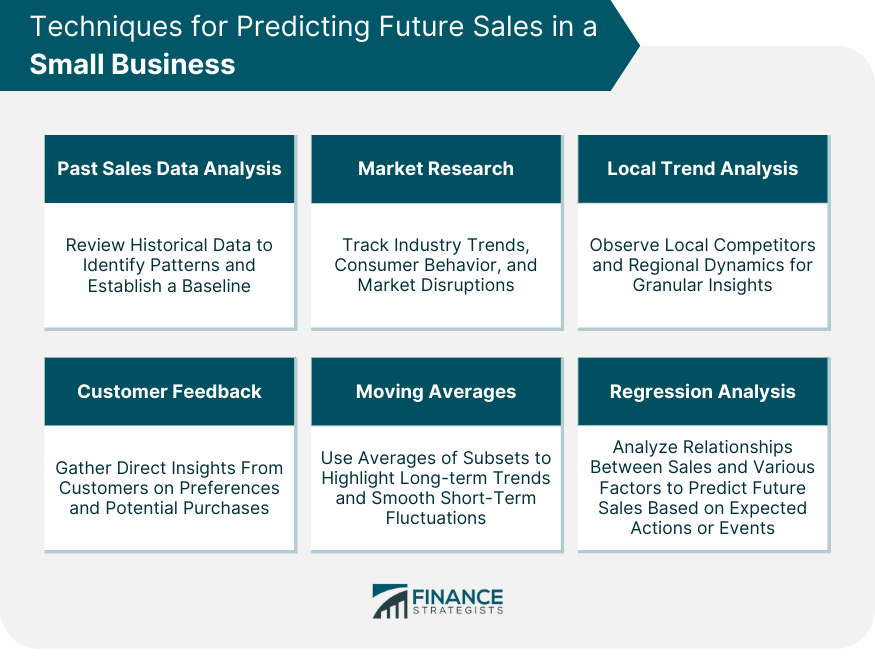
Understanding the Cash Cycle of Business
The cash cycle encompasses the time it takes for a business to convert resource investments, often in the form of inventory, back into cash.
This involves the processes of purchasing inventory, selling it, and subsequently collecting payment. A shorter cycle implies quicker cash turnarounds, which are vital for liquidity.
For small businesses, a firm grasp of the cash cycle can aid in managing cash flow more effectively.
By identifying bottlenecks or delays, businesses can strategize to expedite processes. This might involve renegotiating payment terms with suppliers, offering discounts for prompt customer payments, or optimizing inventory levels to prevent overstocking.
Ultimately, understanding and optimizing the cash cycle ensures that a business remains liquid and agile.
Preparing for Seasonality and Unexpected Changes
Seasonality affects many businesses, from the ice cream vendor witnessing summer surges to the retailer bracing for holiday shopping frenzies.
By analyzing historical data and market trends, businesses can prepare for these cyclical shifts, ensuring they stock up, staff appropriately, and market effectively.
Small businesses, often operating on tighter margins , need to be especially vigilant. Beyond seasonality, they must also brace for unexpected changes – a local construction project obstructing store access, a sudden competitor emergence, or unforeseen regulatory changes.
Building a financial buffer, diversifying product or service lines, and maintaining flexible operational strategies can equip small businesses to weather these unforeseen challenges with resilience.
Securing Small Business Financing and Capital
Role of debt and equity financing.
When businesses seek external funding, they often grapple with the debt vs. equity conundrum. Debt financing involves borrowing money, typically via loans. While it doesn't dilute ownership, it necessitates regular interest payments, potentially impacting cash flow.
Equity financing, on the other hand, entails selling a stake in the business to investors. It might not demand regular repayments, but it dilutes ownership and might influence business decisions.
Small businesses must weigh these options carefully. While loans offer a structured repayment plan and retained control, they might strain finances if the business hits a rough patch.
Equity financing, although relinquishing some control, might bring aboard strategic partners, offering expertise and networks in addition to funds.
The optimal choice hinges on the business's financial health, growth aspirations, and the founder's comfort with sharing control.
Choosing Between Different Types of Loans
A staple in the lending arena, term loans offer businesses a fixed amount of capital that is paid back over a specified period with interest. They're often used for significant one-time expenses, such as purchasing machinery, real estate , or even business expansion.
With predictable monthly payments, businesses can plan their budgets accordingly. However, they might require collateral and a robust credit history for approval.
Lines of Credit
Unlike term loans that provide funds in a lump sum, a line of credit grants businesses access to a pool of funds up to a certain limit.
Businesses can draw from this line as needed, only paying interest on the amount they use. This makes it a versatile tool, especially for managing cash flow fluctuations or unexpected expenses. It serves as a financial safety net, ready for use whenever required.
As the name suggests, microloans are smaller loans designed to cater to businesses that might not need substantial amounts of capital. They're particularly beneficial for startups, businesses with limited credit histories, or those in need of a quick, small financial boost.
Since they are of a smaller denomination, the approval process might be more lenient than traditional loans.
Peer-To-Peer Lending
A contemporary twist to the traditional lending model, peer-to-peer (P2P) platforms connect borrowers directly with individual lenders or investor groups.
This direct model often translates to quicker approvals and competitive interest rates as the overheads of traditional banking structures are removed. With technology at its core, P2P lending can offer a more user-friendly, streamlined process.
However, creditworthiness still plays a pivotal role in determining interest rates and loan amounts.
Crowdfunding and Alternative Financing Options
In an increasingly digital age, crowdfunding platforms like Kickstarter or Indiegogo have emerged as viable financing avenues.
These platforms enable businesses to raise small amounts from a large number of people, often in exchange for product discounts, early access, or other perks. This not only secures funds but also validates the business idea and fosters a community of supporters.
Other alternatives include invoice financing, where businesses get an advance on pending invoices, or merchant cash advances tailored for businesses with significant credit card sales.
Each financing mode offers unique advantages and constraints. Small businesses must meticulously evaluate their financial landscape, growth trajectories, and risk appetite to harness the most suitable option.
Small Business Tax Planning and Management
Basic tax obligations for small businesses.
Navigating the maze of taxation can be daunting, especially for small businesses. Yet, understanding and fulfilling tax obligations is crucial.
Depending on the business structure—whether sole proprietorship , partnership , LLC , or corporation—different tax rules apply. For instance, while corporations are taxed on their earnings, sole proprietors report business income and expenses on their personal tax returns.
In addition to income taxes, small businesses may also be responsible for employment taxes if they have employees. This covers Social Security , Medicare , federal unemployment, and sometimes state-specific taxes.
There might also be sales taxes, property taxes, or special state-specific levies to consider.
Consistently maintaining accurate financial records, being aware of filing deadlines, and setting aside funds for tax obligations are essential practices to avoid penalties and ensure compliance.
Advantages of Tax Planning and Potential Deductions
Tax planning is the strategic approach to minimizing tax liability through the best use of available allowances, deductions, exclusions, and breaks.
For small businesses, effective tax planning can lead to significant savings.
This might involve strategies like deferring income to a later tax year, choosing the optimal time to purchase equipment, or taking advantage of specific credits available to businesses in certain sectors or regions.
Several potential deductions can reduce taxable income for small businesses. These include expenses like rent, utilities, business travel, employee wages, and even certain meals.
By keeping abreast of tax law changes and actively seeking out eligible deductions, small businesses can optimize their financial landscape, ensuring they're not paying more in taxes than necessary.
Importance of Hiring a Tax Professional or Accountant
While it's feasible for small business owners to manage their taxes, the intricate nuances of tax laws make it beneficial to consult professionals.
An experienced accountant or tax consultant can not only ensure compliance but can proactively recommend strategies to reduce tax liability.
They can guide businesses on issues like whether to classify someone as an employee or a contractor, how to structure the business for optimal taxation, or when to make certain capital investments.
Beyond just annual tax filing, these professionals offer year-round counsel, helping businesses maintain clean financial records, stay updated on tax law changes, and plan for future financial moves.
The investment in professional advice often pays dividends , saving businesses from costly mistakes, penalties, or missed financial opportunities.
Regularly Reviewing and Adjusting the Small Business Financial Plan
Setting checkpoints and milestones.
Like any strategic blueprint, a financial plan isn't static. It serves as a guiding framework but should be flexible enough to adapt to evolving business realities.
Setting regular checkpoints— quarterly , half-yearly, or annually—can help businesses assess whether they're on track to meet their financial objectives.
Milestones, such as reaching a specific sales target, launching a new product, or expanding into a new market, offer tangible markers of progress. Celebrating these victories can bolster morale, while any shortfalls can serve as lessons, prompting strategy tweaks. F
or small businesses, where agility is an asset, regularly revisiting the financial plan ensures that the business remains aligned with its overarching financial goals while being responsive to the dynamic marketplace.
Using Financial Ratios to Monitor Business Health
Financial ratios offer a distilled snapshot of a business's health. Ratios like the current ratio ( current assets divided by current liabilities ) can shed light on liquidity, indicating whether a business can meet short-term obligations.
The debt-to-equity ratio , contrasting borrowed funds with owner's equity, offers insights into the business's leverage and potential financial risk.
Profit margin , depicting profitability relative to sales, can highlight operational efficiency. By consistently monitoring these and other pertinent ratios, small businesses can glean actionable insights, understanding their financial strengths and areas needing attention.
In a realm where early intervention can stave off major financial setbacks, these ratios serve as vital diagnostic tools, guiding informed decision-making.
Pivoting Strategies Based on Financial Performance
In the ever-evolving world of business, flexibility is paramount. If financial reviews indicate that certain strategies aren't yielding anticipated results, it might be time to pivot.
This could involve tweaking product offerings, revising pricing strategies, targeting a different customer segment, or even overhauling the business model.
For small businesses, the ability to pivot can be a lifeline. It allows them to respond swiftly to market changes, customer feedback, or internal challenges.
A robust financial plan, while offering direction, should also be pliable, accommodating shifts in strategy based on real-world performance. After all, in the business arena, adaptability often spells the difference between stagnation and growth.
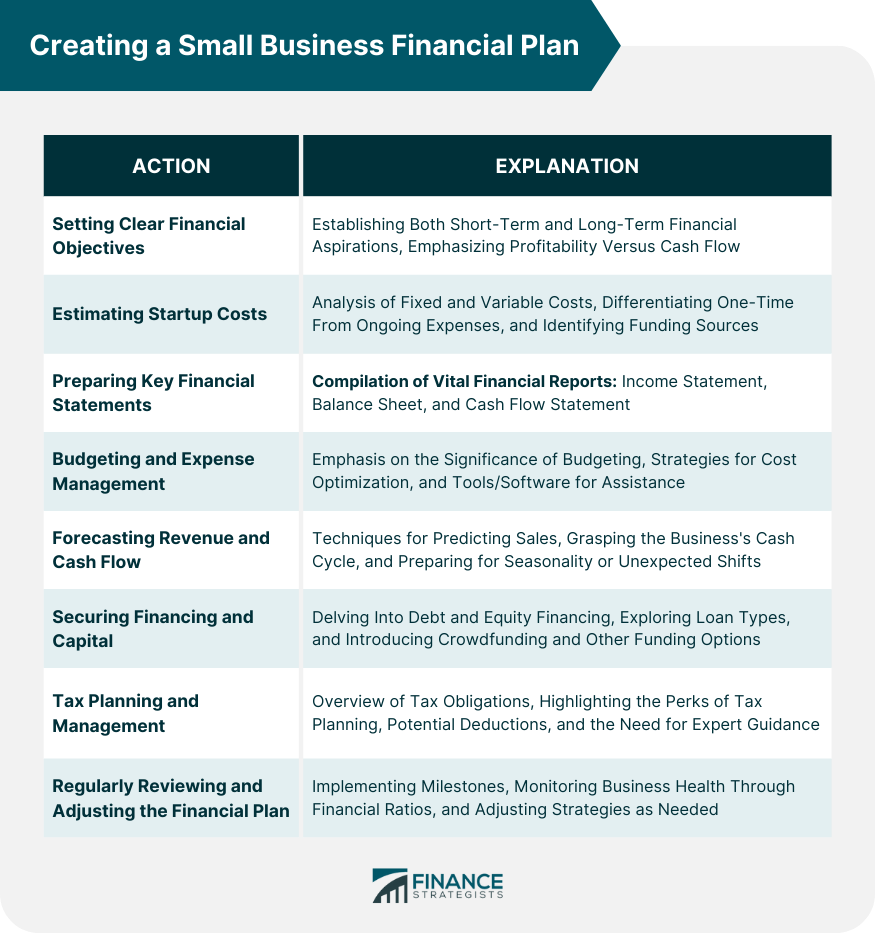
Bottom Line
Financial foresight is integral for the stability and growth of small businesses. Effective revenue and cash flow forecasting, anchored by historical sales data and enhanced by market research, local trends, and customer feedback, ensures businesses are prepared for future demands.
With the unpredictability of the business environment, understanding the cash cycle and preparing for unforeseen challenges is essential.
As businesses contemplate external financing, the decision between debt and equity and the myriad of loan types, should be made judiciously, keeping in mind the business's health, growth aspirations, and risk appetite.
Furthermore, diligent tax planning, with professional guidance, can lead to significant financial benefits. Regular reviews using financial ratios allow businesses to gauge their performance, adapt strategies, and pivot when necessary.
Ultimately, the agility to adapt, guided by a well-structured financial plan, is pivotal for businesses to thrive in a dynamic marketplace.
Creating a Small Business Financial Plan FAQs
What is the importance of a financial plan for small businesses.
A financial plan offers a structured roadmap, guiding businesses in making informed decisions, ensuring growth, and navigating financial challenges.
How do forecasting revenue and understanding cash cycles aid in financial planning?
Forecasting provides insights into expected income, aiding in budget allocation, while understanding cash cycles ensures effective liquidity management.
What are the core components of a financial plan for small businesses?
Core components include setting objectives, estimating startup costs, preparing financial statements, budgeting, forecasting, securing financing, and tax management.
Why is tax planning vital for small businesses?
Tax planning ensures compliance, optimizes tax liabilities through available deductions, and helps businesses save money and avoid penalties.
How often should a small business review its financial plan?
Regular reviews, ideally quarterly or half-yearly, ensure alignment with business goals and allow for strategy adjustments based on real-world performance.
About the Author
True Tamplin, BSc, CEPF®
True Tamplin is a published author, public speaker, CEO of UpDigital, and founder of Finance Strategists.
True is a Certified Educator in Personal Finance (CEPF®), author of The Handy Financial Ratios Guide , a member of the Society for Advancing Business Editing and Writing, contributes to his financial education site, Finance Strategists, and has spoken to various financial communities such as the CFA Institute, as well as university students like his Alma mater, Biola University , where he received a bachelor of science in business and data analytics.
To learn more about True, visit his personal website or view his author profiles on Amazon , Nasdaq and Forbes .
Related Topics
- Advanced Diploma in Financial Planning
- Average Cost of a Certified Financial Planner
- Benefits of Having a Financial Planner
- Cash Flow-Based Financial Planning
- Charitable Financial Planning
- Components of a Good Financial Plan
- Fee-Only Financial Planning
- Financial Contingency Planning
- Financial Planner for Retirement
- Financial Planning Career Pathway
- Financial Planning Pyramid
- Financial Planning Tips
- Financial Planning Trends
- Financial Planning and Analysis
- Financial Planning for Married Couples
- Financial Planning for Startups
- Financial Planning vs Budgeting
- Financial Tips for Young Adults
- High-Net-Worth Financial Planning
- How to Become a Chartered Financial Planner
- How to Build a 5-Year Financial Plan
- How to Choose a Financial Planner
- Limitations of Financial Planning
- Registered Education Savings Plan (RESP)
- Role of Financial Planner in Estate Planning
- The Function of a Financial Planner
- Ultra-High-Net-Worth Financial Planning
- What Degree Do You Need to Be a Financial Planner?
- When Do You Need a Financial Planner?
Ask a Financial Professional Any Question
Meet top certified financial advisors near you, find advisor near you, our recommended advisors.

Taylor Kovar, CFP®
WHY WE RECOMMEND:
Fee-Only Financial Advisor Show explanation
Certified financial planner™, 3x investopedia top 100 advisor, author of the 5 money personalities & keynote speaker.
IDEAL CLIENTS:
Business Owners, Executives & Medical Professionals
Strategic Planning, Alternative Investments, Stock Options & Wealth Preservation

Claudia Valladares
Bilingual in english / spanish, founder of wisedollarmom.com, quoted in gobanking rates, yahoo finance & forbes.
Retirees, Immigrants & Sudden Wealth / Inheritance
Retirement Planning, Personal finance, Goals-based Planning & Community Impact
We use cookies to ensure that we give you the best experience on our website. If you continue to use this site we will assume that you are happy with it.
Fact Checked
At Finance Strategists, we partner with financial experts to ensure the accuracy of our financial content.
Our team of reviewers are established professionals with decades of experience in areas of personal finance and hold many advanced degrees and certifications.
They regularly contribute to top tier financial publications, such as The Wall Street Journal, U.S. News & World Report, Reuters, Morning Star, Yahoo Finance, Bloomberg, Marketwatch, Investopedia, TheStreet.com, Motley Fool, CNBC, and many others.
This team of experts helps Finance Strategists maintain the highest level of accuracy and professionalism possible.
Why You Can Trust Finance Strategists
Finance Strategists is a leading financial education organization that connects people with financial professionals, priding itself on providing accurate and reliable financial information to millions of readers each year.
We follow strict ethical journalism practices, which includes presenting unbiased information and citing reliable, attributed resources.
Our goal is to deliver the most understandable and comprehensive explanations of financial topics using simple writing complemented by helpful graphics and animation videos.
Our writing and editorial staff are a team of experts holding advanced financial designations and have written for most major financial media publications. Our work has been directly cited by organizations including Entrepreneur, Business Insider, Investopedia, Forbes, CNBC, and many others.
Our mission is to empower readers with the most factual and reliable financial information possible to help them make informed decisions for their individual needs.
How It Works
Step 1 of 3, ask any financial question.
Ask a question about your financial situation providing as much detail as possible. Your information is kept secure and not shared unless you specify.

Step 2 of 3
Our team will connect you with a vetted, trusted professional.
Someone on our team will connect you with a financial professional in our network holding the correct designation and expertise.

Step 3 of 3
Get your questions answered and book a free call if necessary.
A financial professional will offer guidance based on the information provided and offer a no-obligation call to better understand your situation.

Where Should We Send Your Answer?

Just a Few More Details
We need just a bit more info from you to direct your question to the right person.
Tell Us More About Yourself
Is there any other context you can provide.
Pro tip: Professionals are more likely to answer questions when background and context is given. The more details you provide, the faster and more thorough reply you'll receive.
What is your age?
Are you married, do you own your home.
- Owned outright
- Owned with a mortgage
Do you have any children under 18?
- Yes, 3 or more
What is the approximate value of your cash savings and other investments?
- $50k - $250k
- $250k - $1m
Pro tip: A portfolio often becomes more complicated when it has more investable assets. Please answer this question to help us connect you with the right professional.
Would you prefer to work with a financial professional remotely or in-person?
- I would prefer remote (video call, etc.)
- I would prefer in-person
- I don't mind, either are fine
What's your zip code?
- I'm not in the U.S.
Submit to get your question answered.
A financial professional will be in touch to help you shortly.

Part 1: Tell Us More About Yourself
Do you own a business, which activity is most important to you during retirement.
- Giving back / charity
- Spending time with family and friends
- Pursuing hobbies
Part 2: Your Current Nest Egg
Part 3: confidence going into retirement, how comfortable are you with investing.
- Very comfortable
- Somewhat comfortable
- Not comfortable at all
How confident are you in your long term financial plan?
- Very confident
- Somewhat confident
- Not confident / I don't have a plan
What is your risk tolerance?
How much are you saving for retirement each month.
- None currently
- Minimal: $50 - $200
- Steady Saver: $200 - $500
- Serious Planner: $500 - $1,000
- Aggressive Saver: $1,000+
How much will you need each month during retirement?
- Bare Necessities: $1,500 - $2,500
- Moderate Comfort: $2,500 - $3,500
- Comfortable Lifestyle: $3,500 - $5,500
- Affluent Living: $5,500 - $8,000
- Luxury Lifestyle: $8,000+
Part 4: Getting Your Retirement Ready
What is your current financial priority.
- Getting out of debt
- Growing my wealth
- Protecting my wealth
Do you already work with a financial advisor?
Which of these is most important for your financial advisor to have.
- Tax planning expertise
- Investment management expertise
- Estate planning expertise
- None of the above
Where should we send your answer?
Submit to get your retirement-readiness report., get in touch with, great the financial professional will get back to you soon., where should we send the downloadable file, great hit “submit” and an advisor will send you the guide shortly., create a free account and ask any financial question, learn at your own pace with our free courses.
Take self-paced courses to master the fundamentals of finance and connect with like-minded individuals.
Get Started
Hey, did we answer your financial question.
We want to make sure that all of our readers get their questions answered.
Great, Want to Test Your Knowledge of This Lesson?
Create an Account to Test Your Knowledge of This Topic and Thousands of Others.
Get Your Question Answered by a Financial Professional
Create a free account and submit your question. We'll make sure a financial professional gets back to you shortly.
Business plan vs budget: what's the difference?
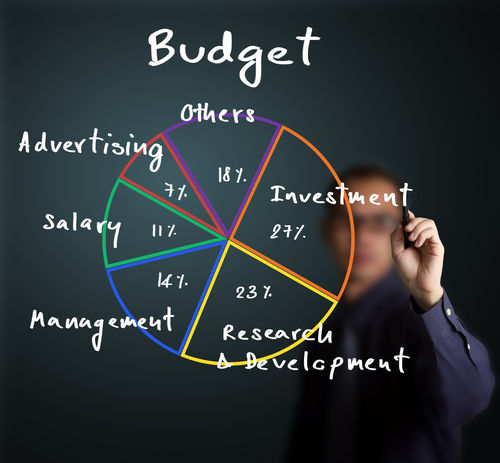
Is the difference between business planning and working out the budget confusing you? These two concepts can be tricky to distinguish, which is why we're here to give you a clear definition of both in our business plan vs. budget guide below.
Business plan vs budget: what do they have in common?
There are two main similarities between business planning and budgeting:
- The first one is that they both give an idea as to what the company's future could be.
- The second is that they both include a financial forecast which has been put together by the management team. Data around both the business planning and budgeting exercises are to be presented to potential financial partners, lenders or investors.
Business plan vs budget: what are the differences?
There are three main differences between business planning and budgeting: the scope, the time frame, and the depth.
Business plan vs. budget: The scope
A budget only includes a financial forecast, whereas a business plan will also detail the commercial opportunity and the market, the company and its organisation and strategy over the next few years. The scope of the business plan is therefore much larger than the budget.
Business plan vs. budget: T he time frame
Both documents have very different time frames. A budget is done over a short-term horizon, generally for 12 months, while a business plan is a medium-long term document looking at the next 3 to 5 years.
Business plan vs. budget: The depth
The level of depth and detail for each document also varies significantly.
A budget will have to be very detailed, and will include an itemised list of each planned expense with its exact cost, whereas a business plan will leave room for change, as the main goal will be to get a global view of the business.
This can also be explained by the two document's respective time frames.
Apart from new businesses, it is easy for a company to have an idea of what's going to happen in the next 12 months, which makes it easier for the management team to use last year's accounts as a point of reference by simply adding inflation and marketing costs for the new year to create the budget.
It is much harder to have a clear vision of what will happen to a company over the next 3 or 5 years. Market demand can evolve, regulation can change, competitors can adapt to different market trends, and many other aspects of the business can dramatically change the game, rendering it impossible for the entrepreneur to predict exactly how well the company will be able to perform financially.
Before any entrepreneur can truly claim they know what they're doing when putting a business plan or budget together, it's vital to understand the difference between the two.
We do hope this article has helped you understand the main differences between a business plan and a budget, however do not hesitate to get in touch if you have any more questions.
Also on The Business Plan Shop
- What is a business plan and how can I create one?
- How to do a market analysis for a business plan
- How to create a sales forecast for your business
Know someone who could be interested finding out more about the differences between business planning and budgeting? Share this article with just one click.

Founder & CEO at The Business Plan Shop Ltd
Guillaume Le Brouster is a seasoned entrepreneur and financier.
Guillaume has been an entrepreneur for more than a decade and has first-hand experience of starting, running, and growing a successful business.
Prior to being a business owner, Guillaume worked in investment banking and private equity, where he spent most of his time creating complex financial forecasts, writing business plans, and analysing financial statements to make financing and investment decisions.
Guillaume holds a Master's Degree in Finance from ESCP Business School and a Bachelor of Science in Business & Management from Paris Dauphine University.
Create a convincing business plan
Assess the profitability of your business idea and create a persuasive business plan to pitch to investors

500,000+ entrepreneurs have already tried our solution - why not join them?
Not ready to try our on-line tool ? Learn more about our solution here
Need some inspiration for your business plan?
Subscribe to The Business Plan Shop and gain access to our business plan template library.

Need a professional business plan? Discover our solution
Write your business plan with ease!

It's easy to create a professional business plan with The Business Plan Shop
Want to find out more before you try? Learn more about our solution here
Strategic Planning vs Financial Planning: Business Approaches
- January 15, 2024

Strategic Planning: The Key to Long-Term Success
In the unpredictable world of business, success requires much more than just managing finances. While financial planning is crucial for short-term stability and growth, strategic planning takes a broader approach by focusing on long-term goals and the overall direction of a company. It involves analyzing the business environment, identifying opportunities, and formulating strategies that can give a firm a competitive advantage.
Unlike financial planning, which primarily deals with budgeting, forecasting, and investment decisions, strategic planning involves making critical choices that shape the future of a business. It considers a variety of factors, such as market trends, industry dynamics, customer needs, and technological advancements, to develop a roadmap for success.
The Importance of Strategic Planning
Strategic planning is essential for any business looking to grow and thrive in the face of intense competition and constant change. It provides a sense of direction and purpose, aligning the efforts of all employees towards common goals. By setting clear objectives and defining the path to achieve them, strategic planning enables businesses to make informed decisions and adapt to evolving market conditions.
Moreover, strategic planning helps organizations anticipate and prepare for potential challenges and risks. It allows them to identify their strengths and weaknesses, as well as opportunities and threats in the external environment. Armed with this knowledge, companies can leverage their strengths, mitigate weaknesses, and proactively respond to market disruptions.
The Components of Strategic Planning
Strategic planning typically involves a series of interconnected components that form a comprehensive framework. These components include:
- Analysis of the Business Environment: This involves evaluating both the internal and external factors that influence a company’s performance. Internal analysis focuses on the organization’s strengths and weaknesses, while external analysis examines factors such as competitors, suppliers, customers, and industry trends.
- Setting Goals and Objectives: Clear, measurable goals are essential for successful strategic planning. These goals should be aligned with the organization’s mission and vision and serve as a yardstick for evaluating performance.
- Developing Strategies: Strategies are the means by which organizations achieve their goals. They should be realistic, actionable, and tailored to the specific needs and resources of the business.
- Resource Allocation: Allocating resources effectively is crucial for strategy execution. This involves determining how and where to invest financial and human resources to achieve the desired outcomes.
- Implementation and Monitoring: Once strategies are developed, they need to be implemented and monitored to ensure progress. Regular evaluation and adjustment are essential to keep the strategy on track and make necessary changes as circumstances evolve.
- Evaluation and Continuous Improvement: Strategic planning is an ongoing process that requires periodic evaluation and refinement. By analyzing the results and learning from successes and failures, organizations can continuously improve their strategies and adapt to the changing business landscape.
The Role of Financial Planning
While strategic planning sets the long-term direction for a business, financial planning plays a vital role in supporting and facilitating its execution. Financial planning involves managing the company’s financial resources, optimizing cash flow, and ensuring the availability of funds to implement strategic initiatives.
Financial planning focuses on budgeting, forecasting, and managing financial risks. It helps businesses allocate resources efficiently, make informed investment decisions, and ensure that the company remains financially sustainable.
However, financial planning alone is insufficient to drive long-term growth and success. Without a well-defined strategic plan, businesses may struggle to allocate resources effectively or miss opportunities for innovation and expansion.
Striking the Balance: Integrating Strategic and Financial Planning
To achieve optimal results, organizations must integrate strategic and financial planning. Both approaches are interdependent and should inform each other throughout the planning process.
Strategic planning provides the foundation for financial planning. By setting clear goals and defining strategies, companies can identify the financial resources required to execute their plans. This includes estimating the funds needed for research and development, marketing efforts, talent acquisition, and infrastructure expansion.
Conversely, financial planning supports strategic decision-making by evaluating the financial feasibility of various initiatives and determining their potential return on investment. It helps companies assess the risks and rewards associated with different courses of action, enabling them to make informed choices that align with their long-term objectives.
Successful organizations strike a balance between strategic and financial planning, recognizing that they are interconnected and equally important. A strong strategic plan provides the vision and direction, while solid financial planning ensures the resources are available to execute that plan effectively.
The Bottom Line
In the realm of business, strategic planning and financial planning are not mutually exclusive, but rather complementary approaches. While financial planning focuses on managing resources and short-term stability, strategic planning takes a holistic view, shaping the long-term success of an organization.
By incorporating both strategic and financial planning into their business approaches, companies can navigate the complexities of the market, capitalize on opportunities, and achieve sustainable growth. Strategic planning provides the roadmap to success, while financial planning ensures the engine of the organization is fueled and running smoothly.
Leave a Reply Cancel reply
Your email address will not be published. Required fields are marked *
Save my name, email, and website in this browser for the next time I comment.
You May Also Like

Hedging vs Speculating: Understanding Investment Strategies
- March 5, 2024
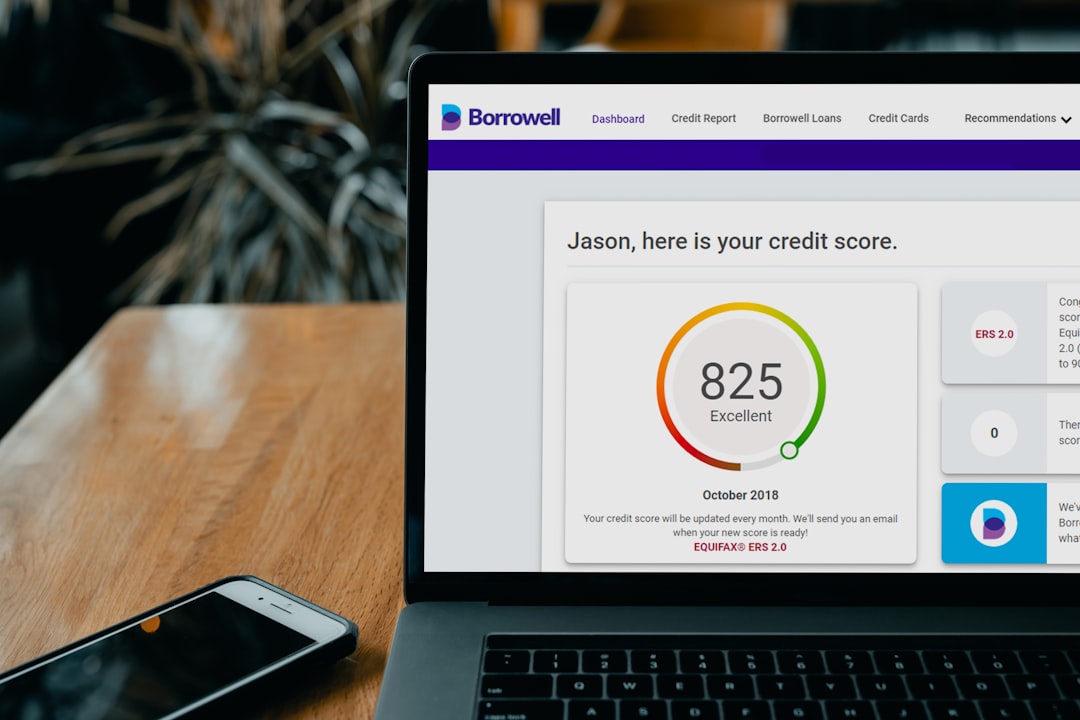
Market Risk vs. Credit Risk: Understanding Different Types of Financial Risk

Swap vs. Option: Financial Instruments
- March 4, 2024

Shorts vs Puts: Options Trading Strategies

Enterprise Risk Management vs Traditional Risk Management
- March 3, 2024

Cybersecurity Risk Management: Protecting Your Finances in the Digital Age
- March 2, 2024
What is financial planning in business?
Table of Contents
What is financial planning?
Difference between a personal and business financial plan, how to create a financial plan for your business, develop a solid strategy, create a balance sheet, make cash flow projections, prepare a projected income statement, allocate your budget, monitor your results, plan your finances easily with countingup.
Planning and organising your finances is one of the most crucial parts of running your own business. Financial planning helps you prepare for what the future may involve and uncover ways to grow your company.
But a financial plan involves much more than simply tracking income and expenses. To help you understand what financial planning is, this guide covers:
- The difference between a personal and business financial plan
Read on to learn how Countingup can help you manage your financial planning with ease.
A financial plan serves as a roadmap for your economic growth, showing where you’re at right now, where you want to go, and how you will get there.
You can create a financial plan for personal and business purposes, but these processes are slightly different. We’ll explain more about personal vs business financial planning later in this article.
Financial plans are essential because they force you to consider if you’re on the right track to achieve your business goals. Businesses don’t usually grow accidentally but as a result of hard work and careful planning.
Working with specific goals in mind and a plan for reaching them increases your chances of taking your business where you want it to go. Otherwise, you risk stumbling around in the dark, focusing on things that won’t help your business grow.
Most financial plans include much of the same information. However, there are some key differences between a personal financial plan and a business one. The reason is that an individual’s financial goals are likely different from those of a growing company.
For example, your personal financial plan may include a retirement plan, a strategy for investments, and a plan for buying a new house. You’ll also likely focus on making more money while paying yourself as tax-efficiently as possible.
On the flip side, your company’s financial plan is more likely to focus on goals like hiring more staff, buying new equipment, expanding your product or service offering, and purchasing additional inventory.
These goals are entirely different from the hypothetical individual goals we just mentioned. Therefore, you need a different strategy for your business and personal financial planning.
What is important to include in a financial plan? Below we’ve listed some of the main documents and other aspects you need to create a robust plan:
Effective financial planning usually includes a strategic plan. Think about what you want to accomplish in the next year and ask yourself questions like:
- Do I need to expand or hire more staff?
- Do I need more equipment or new resources?
- How will my plan affect my cash flow?
- Will I need financing? If yes, how much?
Once you know where you want your business to go in the next 12 months, think about how much it might cost you.
It’s also good to think about what you would do if your finances suddenly deteriorated, perhaps from not getting enough jobs or selling enough products. Maybe you could put money aside when the business goes well to have funds available if money ever gets tight.
Your balance sheet is a snapshot of your business’s financial position, meaning how much money you have, how much you’ll receive, and how much money you owe. It’s called a ‘balance sheet’ because it calculates what you need to balance out.
A balance sheet should list your:
- Assets: Such as unpaid invoices, money in the bank, and inventory.
- Liabilities : Money you owe, credit card balances, loan repayments, and so on.
- Equity: For small businesses, this is usually the owner’s equity, but it could include investors’ shares, retained earnings, and stock proceeds.
Financial planning also involves predicting how much money you’ll make and spend in the coming month, quarter or year. Record how much you expect to make from sales and what you think you’ll spend on expenses like bills, supplies, loan repayments, and so on.
You can use a simple spreadsheet to calculate your cash flow projections. We have a separate guide that tells you all about what cash flow is and how it works.
Next, you’ll want to prepare a projected income (or profit and loss) statement to predict how successful you think your company will be. It can be helpful to include different scenarios, good and bad, to help you prepare for each one.
Income statements typically include:
- Revenue: Money from sales.
- Expenses: Money you’ll spend.
- Total income: Calculated as your revenue minus expenses before income taxes.
- Income taxes: Such as Income Tax, National Insurance, and Corporation Tax for limited companies.
- Net income: Your total income after deducting expenses and taxes.
Once you’ve created your strategy and filled in your balance sheet, cash flow, and income projections, you need to figure out where you’ll spend the money you make.
Take your company’s overall budget (read more about how to budget money for your growing business ) and divide it into specific budgets. For example, one for hiring new staff, one for buying new equipment, and one for expanding your product or service offering.
Once you’re done with your financial planning, monitor your real-life results and compare them to your predictions. Monitoring helps you spot any problems so you can fix them before they get out of hand.
It may be a good idea to hire a financial expert to help you put together and monitor your financial plan. Accounting software like Countingup can also help you keep track of your finances almost effortlessly.
Countingup offers sole traders and small business owners the chance to save time and money.
With Countingup, your business current account and accounting software are available in one app. Coupled with our handy expense reminders, automated invoicing, and tax estimates, you can have complete confidence in keeping on top of your finances as you trade.
The app’s realtime profit and loss dashboard gives an insight into your business’ performance and can give you the edge you need to make it a success.
Find out more about Countingup here and sign up for free today.

- Counting Up on Facebook
- Counting Up on Twitter
- Counting Up on LinkedIn
Related Resources
How to throw a launch party for a new business.
So your business is all set up and you’re ready to launch in
How to set up a TikTok shop (2024)
TikTok can be an excellent platform for growing a business, big or small.
Best side hustle ideas to start in 2024 (UK Edition)
Looking to start a new career? Or maybe you’re looking to embrace your
10 key tips to starting a business in the UK
10 things you need to know before starting a business in the UK
How to Register A Company in the UK
There are over four million companies registered in the UK – could your
How to set up your business: Sole trader or limited company
If you’ve just started a business, you’ll likely be faced with the early
How to register as a sole trader
Running a small business and considering whether to register as a sole trader?
How to open a Barclays business account
When starting a new business, one of the first things you need to
6 examples of objectives for a small business plan
Your new company’s business plan is a crucial part of your success, as
How to start a successful business during a recession
Starting a business during a recession may sound like madness, but some big
What is a mission statement (and how to write one)
When starting a small business, you’ll need a plan to get things up
How does self-employment work?
The decision to become self-employed is not one to take lightly, and you

- Global (EN)
- Albania (en)
- Algeria (fr)
- Argentina (es)
- Armenia (en)
- Australia (en)
- Austria (de)
- Austria (en)
- Azerbaijan (en)
- Bahamas (en)
- Bahrain (en)
- Bangladesh (en)
- Barbados (en)
- Belgium (en)
- Belgium (nl)
- Bermuda (en)
- Bosnia and Herzegovina (en)
- Brasil (pt)
- Brazil (en)
- British Virgin Islands (en)
- Bulgaria (en)
- Cambodia (en)
- Cameroon (fr)
- Canada (en)
- Canada (fr)
- Cayman Islands (en)
- Channel Islands (en)
- Colombia (es)
- Costa Rica (es)
- Croatia (en)
- Cyprus (en)
- Czech Republic (cs)
- Czech Republic (en)
- DR Congo (fr)
- Denmark (da)
- Denmark (en)
- Ecuador (es)
- Estonia (en)
- Estonia (et)
- Finland (fi)
- France (fr)
- Georgia (en)
- Germany (de)
- Germany (en)
- Gibraltar (en)
- Greece (el)
- Greece (en)
- Hong Kong SAR (en)
- Hungary (en)
- Hungary (hu)
- Iceland (is)
- Indonesia (en)
- Ireland (en)
- Isle of Man (en)
- Israel (en)
- Ivory Coast (fr)
- Jamaica (en)
- Jordan (en)
- Kazakhstan (en)
- Kazakhstan (kk)
- Kazakhstan (ru)
- Kuwait (en)
- Latvia (en)
- Latvia (lv)
- Lebanon (en)
- Lithuania (en)
- Lithuania (lt)
- Luxembourg (en)
- Macau SAR (en)
- Malaysia (en)
- Mauritius (en)
- Mexico (es)
- Moldova (en)
- Monaco (en)
- Monaco (fr)
- Mongolia (en)
- Montenegro (en)
- Mozambique (en)
- Myanmar (en)
- Namibia (en)
- Netherlands (en)
- Netherlands (nl)
- New Zealand (en)
- Nigeria (en)
- North Macedonia (en)
- Norway (nb)
- Pakistan (en)
- Panama (es)
- Philippines (en)
- Poland (en)
- Poland (pl)
- Portugal (en)
- Portugal (pt)
- Romania (en)
- Romania (ro)
- Saudi Arabia (en)
- Serbia (en)
- Singapore (en)
- Slovakia (en)
- Slovakia (sk)
- Slovenia (en)
- South Africa (en)
- Sri Lanka (en)
- Sweden (sv)
- Switzerland (de)
- Switzerland (en)
- Switzerland (fr)
- Taiwan (en)
- Taiwan (zh)
- Thailand (en)
- Trinidad and Tobago (en)
- Tunisia (en)
- Tunisia (fr)
- Turkey (en)
- Turkey (tr)
- Ukraine (en)
- Ukraine (ru)
- Ukraine (uk)
- United Arab Emirates (en)
- United Kingdom (en)
- United States (en)
- Uruguay (es)
- Uzbekistan (en)
- Uzbekistan (ru)
- Venezuela (es)
- Vietnam (en)
- Vietnam (vi)
- Zambia (en)
- Zimbabwe (en)
- Financial Reporting View
- Women's Leadership
- Corporate Finance
- Board Leadership
- Executive Education
Fresh thinking and actionable insights that address critical issues your organization faces.
- Insights by Industry
- Insights by Topic
KPMG's multi-disciplinary approach and deep, practical industry knowledge help clients meet challenges and respond to opportunities.
- Advisory Services
- Audit Services
- Tax Services
Services to meet your business goals
Technology Alliances
KPMG has market-leading alliances with many of the world's leading software and services vendors.
Helping clients meet their business challenges begins with an in-depth understanding of the industries in which they work. That’s why KPMG LLP established its industry-driven structure. In fact, KPMG LLP was the first of the Big Four firms to organize itself along the same industry lines as clients.
- Our Industries
How We Work
We bring together passionate problem-solvers, innovative technologies, and full-service capabilities to create opportunity with every insight.
- What sets us apart
Careers & Culture
What is culture? Culture is how we do things around here. It is the combination of a predominant mindset, actions (both big and small) that we all commit to every day, and the underlying processes, programs and systems supporting how work gets done.
Relevant Results
Sorry, there are no results matching your search., the future of business planning and analysis.
Broaden the scope of traditional financial planning and analysis (FP&A) to business planning and analysis (BP&A).

For decades, organizations’ finance departments have used FP&A to budget and forecast within a fiscal year, conduct historical reporting, and generate standard reports. While this traditional approach worked well in the past, businesses today face a host of global and local challenges that require their finance groups to take a cross-enterprise approach, incorporating activities from functions that are crucial to moving the business forward—such as sales, marketing, and operational planning—to align with their company’s strategic vision.
We call this holistic approach business planning and analysis, or BP&A. The end result? Planning becomes a more dynamic process that focuses on the future in a more effective and efficient manner.
Dive into our thinking:
New reality business planning analysis
It's not just COVID-19. Disruptions can happen anytime. Can your team keep up with today's pace of change?

Gain insights to drive better decisions
Watch how KPMG designed an intelligent forecasting engine using artificial intelligence and machine learning to help a global manufacturing company harness their data, uncover new markets and threats, and gain a sizeable advantage.
Five areas for BP&A success
The BP&A imperative is to provide value and identify paths to take forward, even in the wake of large, unexpected disruptions. To ensure success, BP&A teams should focus on five key areas.
Rapid strategic modeling
From budget cycle to continuous forecasting, bp&a as a value creator, adopting leading technologies, enhancing and increasing skills, explore more.

Enabling next gen driver-based planning
Move your finance team from task-master to value-generating partner. Learn how to elevate financial planning & analysis.

Future of finance
The CFO agenda for elevating finance
Meet our team

Subscribe to Business Planning and Analysis Insights
A pulse on what's really happening in FP&A and business planning
Complete the form below to receive executive insights, webcast invitations, and other communications.
By submitting, you agree that KPMG LLP may process any personal information you provide pursuant to KPMG LLP's Privacy Statement .
Explore other services tailored to your business
Thank you for contacting KPMG. We will respond to you as soon as possible.
Contact KPMG
Job seekers
Visit our careers section or search our jobs database.
Use the RFP submission form to detail the services KPMG can help assist you with.
Office locations
International hotline
You can confidentially report concerns to the KPMG International hotline
Press contacts
Do you need to speak with our Press Office? Here's how to get in touch.
- en - english
- es - español
- > Business Managment
- > Article
The Essentials Of Careful Financial Planning And Forecasting For Businesses

Effective financial planning and forecasting are essential components of any successful business strategy.
Business owners, entrepreneurs, and others can confidently plan for their financial future and achieve long-term success by analyzing past performance and projecting future outcomes.
What Are Financial Plans?
Financial plan examples.
- Financial overview of the company.
- Financial assumptions–all financial projections for business plan guidelines depend on realistic assumptions supporting a financial plan's values. You create assumptions based on credible resources and information.
- Key financial indicators and ratios–in this section, businesses highlight indicators and ratios taken from financial statements to better understand their financial position and health. This section can include factors like working capital and operations, liquidity, debt, and profitability ratios.
- Break-even analysis. This section explains the number of units a company will need to sell to cover future expenses and make a profit. It includes details for a company's variable and fixed costs.
- Financial statements. This section details a company's profit and loss and cash flow statements , allowing for financial modeling to calculate future cash flows.
- Balance sheet. Finally, a financial plan includes a projected balance sheet statement detailing how a business will manage its assets, such as its receivables and inventory.
Financial Planning Methods
- Cash flow-based planning: This method describes a financial planning tool where organizations determine potential income, allocate budgets, and plan for upcoming changes in expenses and income.
- Goal-based planning: A goal-based financial plan outlines how a company will achieve specific financial goals based on its current assets, savings, and future aspirations.
What Is A Financial Forecast?
- how the business performed in previous years
- how companies within the same industry are performing
- the current economic state
- the demand level
- future possibilities
- Fixed costs that are unlikely to change
- Variable costs , including utilities, supplies, wages, and additional resources that businesses need to estimate costs for upcoming periods
- Collecting past financial statements and historical data, including revenue, losses, investments, equity, liabilities, expenditures, income, earnings, and fixed costs.
- A financial forecast method, either qualitative or quantitative
- Frequent analysis of up-to-date financial data
Financial Forecasting Examples
Financial forecasting methods.
- Percent of sales forecasting
- Straight line forecasting
- Moving averages
- Simple linear regression
- Multiple linear regression
- Delphi method
- Market research
- Historical data financial forecasting
- Sales forecasting methodologies
- Cash flow financial forecasting
- tools that analyze customer buying patterns
- machine learning technology
- fraud detection software
- customer relationship management (CRM)
- customer segmentation
Financial Planning vs. Forecasting
Forecasting is a part of financial planning, advantages of financial planning and forecasting.
- Creates a foundation for businesses to understand demand fluctuations and market influences that could impact the cost of goods sold
- Helps companies to reduce financial risk
- It helps make reasonable budgeting decisions.
- It helps raise awareness within a company for numerous external and internal factors.
- Provides insights for future financial decisions
- Helps organizations prepare for worst and best-case scenarios while navigating an uncertain, fluctuating market
- Allows businesses to prepare for predictable economic changes
- Provides essential information for potential financial emergencies so companies have a deeper understanding of navigating these situations
- Ensures financial security for companies in the future
- Sets a company's performance standards
- Helps businesses create actionable and practical goals to foster growth
- Offers a guide for essential financial decision-making
- Improves financial outcomes
Key Steps For Successful Financial Planning And Forecasting In Business
Create detailed budgets, set realistic goals, conduct swot analysis, monitor and adjust, strengthen your business and your finances with camino financial, related articles.


What Is Financial Literacy? A Comprehensive Guide to The ABCs of Money
Financial literacy is a beacon of empowerment amidst economic uncertainty. This concept helps us understand the nuances of finances... Read More

The 3 Credit Bureaus: Their Reports And Credit Scores
Credit bureaus are responsible for managing the credit history of individuals and companies. This score is an important part... Read More

Compound Interest: A Guide to Long-Term Financial Growth
Did you know that compound interest can greatly affect a person’s long-term financial health for the better? This article... Read More

Simple Interest: A Comprehensive Guide for Beginners
In the realm of finance, simple interest serves as the cornerstone for understanding how money grows or accumulates over... Read More

Simple Interest vs Compound Interest: Learn Their Differences And Financial Applications
Simple and compound interest are two forces that determine how your money grows or how much interest payments are... Read More

Zombie Debt Survival Guide: Tips For Facing And Resolving Old Debts
Zombie debt refers to old or forgotten debts that come back from the grave. Usually, these debts come back... Read More
Prequalify in 5 minutes
Select your desired loan type.
- Business Credit
- Business Finance
- Entrepeneurship
- Business Managment
Latest Articles

The Best Money Saving Apps: 2024 Guide
Money-saving apps make managing your finances more effective and easy. They help you budget, save, and invest with just... Read More

When Were Credit Scores Invented? A Journey Through Financial History
Credit scores affect the financial health of both people and companies. Contrary to common belief, they are not a... Read More

Everything you need to know about DSCR: the debt service coverage ratio
The Debt-Service Coverage Ratio (DSCR) is a crucial indicator of financial health and stability. Understanding it can illuminate the... Read More

Call: (952) 542-8900

Financial Planning for Business Owners
Financial planning for business owners and entrepreneurs.

What Is Financial Planning?
Financial planning is the process of creating a comprehensive plan to save and budget money for your future.
It involves proactive planning for some of life’s major financial events like funding education, buying a home, starting a business and retirement . Usually, the ultimate goal of financial planning is to ensure you have enough savings to live comfortably when you retire.
It requires taking a long-term approach that includes evaluating your financial situation, setting long-term goals, taking steps to accumulate money through budget-setting and savings, 401ks, IRAs, and more.
.png)
360's Financial Planning for Business Owners
Financial planning for business owners requires the expertise of specialists who understand the unique needs and challenges of business owners.
Doing what’s right for the business and balancing that with what’s best for your personal goals is an art.
At 360 Financial, we help business owners and entrepreneurs create greater synergy between their long-term business and personal financial goals.
Our Services Include:
Wealth Management
Business Owner Cash Flow Planning
Retirement Savings and Tax Strategies (such as implementing retirement plans (401(k)s, SEP IRAs, and SIMPLE IRAs)
Risk Management
Succession Planning
Investments
Legacy and Estate Planning
Business Planning vs. Personal Financial Planning
Business planning and personal financial planning are two separate disciplines..
Business planning and personal financial planning are two separate disciplines.
The level of complexity involved in managing income, taxes and investments is much greater for businesses than for individuals.
But if you are a business owner, it’s important to understand that your personal finances impact your business finances — and vice versa.
While each should be managed and planned for separately, you should do planning for both simultaneously to have the clearest view of how one impacts the other.
.jpg)
The Four Pillars of Wealth Management for Business Owners
Succession planning vs. exit planning.
Succession planning and exit planning are two different strategies that can be utilized by business owners who are ready to leave their business or retire.
Succession planning usually involves transferring the business to new leaders within an organization. Often this can involve family members or other key employees in the company.
Exit planning involves preparing a business for sale to a new owner or management team. Both have complex legal implications that require careful planning with the help of experienced legal professionals.
Is Succession Planning Important?
Succession planning is extremely important because all business owners will eventually need to consider what happens to their company after they leave or retire.
A well-considered succession plan can create continuity that ensures a smooth transition that keeps the business stable and profitable. Ideally, succession planning is a long-term process where future leaders and owners are identified and developed years in advance of the transition.
We usually recommend a 3 to 10-year time horizon to our clients.
Whether you’re passing the business on to a family member or selling it to a new leadership team, such as a private equity firm, the best succession plan should maximize your return while setting the new owner up for continued success.

5 Important Financial Planning Tips for Small Business Owners
1. Use an Experienced Advisor. There’s a lot at stake for business owners. An advisor that doesn’t have experience with the unique financial planning challenges of business owners probably isn’t the best advisor for you.
2. Keep Personal and Business Finances Separate. Mixing your personal and business finances can create headaches and complex tax challenges. It’s best to do separate financial planning for each, even though they ultimately end up impacting one another.
3. Maintain Good Credit . Keeping a good credit score gives you access to capital loans that can be used for improvements, growing the business, or even acquiring another company.
4. Manage Your Risk. Mitigating risk is essential for business owners. Having the right types of insurance, such as life, liability, property, key person, and health insurance, can protect you and your assets from risk.
5. Do Annual Reviews. You should meet with your advisor to review your financial plan annually and make changes as needed when business or personal circumstances change.
Doing Your Estate Planning

Being a business owner adds complexity to doing your estate planning .
Yet it is vitally important to have a solid estate plan in place that outlines your wishes for how you would like the business assets distributed if you die or become incapacitated.
In many cases, a business owner’s net worth is higher, which may mean the estate could be subject to estate taxes at the state and federal levels.
Utilizing estate and tax planning strategies in advance can save your beneficiaries the expense and headache of probate and reduce their overall tax liability upon inheritance.
Creating a Retirement Plan as a Small Business Owner
Creating a retirement plan as a small business owner is a complex process that should consider multiple factors.
It should be built around what matters to you the most and designed to support the lifestyle you envision for yourself in retirement. Since the business is likely your largest asset, its value when you sell it will be a key part of your retirement plan.
But just like any non-business owner, there are a number of other ways you should be investing along the way to grow your personal retirement wealth.
As a business owner, you’ll likely have more money to do it with and more opportunities to benefit from tax-deferred investments that can lower your personal taxable income.
Creating an Investment Plan
The value of your business is a key piece of your retirement planning puzzle.
But you should also be growing your personal investment portfolio in the years leading up to your retirement. Investments like 401(k)s, IRAs, or SEP IRAs allow you to grow your retirement accounts tax deferred.
The more successful your business becomes, you may be able to take cash distributions that you can use to further diversify your investments to include things like real estate, tax-efficient bonds, and emergency savings.
Your 360 Financial advisor can work with you on a holistic, tax-efficient investment plan that meets your personal goals while simultaneously benefitting your business.

Diversifying Beyond Your Business
It’s wise to diversify beyond your business because relying on its value to fund your retirement is not an ideal strategy.
It’s risky because it places too many proverbial eggs in a single basket. Not all businesses are profitable, and some lose money, or even fail altogether. Building a diverse portfolio of personal investments protects you in the event that the value of your business isn’t enough to fund your retirement.
We can help you with a variety of diversification strategies for both your business and your personal finances.
Managing Risk for Yourself and Your Family
With more money comes greater risk.
Our risk management specialists can provide insurance and other risk management tools for your business, as well as yourself and family.
One of the biggest risks to the value of a business if an owner suddenly passes away or becomes incapacitated. The abrupt loss of a key leader could be devasting to the company’s ability to function.
Important risk planning initiatives like key person insurance and drafting key legal documents that govern how a deceased owner’s shares of a company are distributed, such as buy/sell agreements , are musts for any business owner.
On the personal side, having life insurance for yourself can provide for your family if you die and give them funds to cover funeral expenses and any tax they may owe after they inherit your assets.
Additionally, having insurance for larger personal assets like your home, boats and vehicles as well umbrella policies for liability, are all smart ways to manage risk and protect your wealth.
Importance of Financial Planning for Entrepreneurs and Business Owners
Financial planning for business owners and entrepreneurs is highly important because business owners tend to have more at stake.
They usually have more money to gain or lose, and a higher exposure to risk and tax liability. A financial advisor that specializes in working with business owners can help create a holistic financial plan that includes budgeting, investing, and retirement planning.
A financial advisor can also provide guidance on business strategies for:
lowering taxes
managing debt
finding capital
tracking cash flow to ensure that the business remains financially healthy
.jpg)
Working with a Wealth Management Team
The more wealth you have, the more you can benefit can from working with an experienced wealth management team.
The 360 Financial team’s 25-person team includes seven financial advisors with more than 200 years of combined experience as wealth managers, financial advisors, and planners with CFP®’s (Certified Financial Planner™), MBA, CLTC, and fiduciary investment credentials.
The 360 Financial team specializes in the following:
investment and asset management
cash and debt flow planning
college planning
risk management
insurance planning
estate planning
retirement and income planning
business planning
tax strategies
How to Choose a Financial Advisor or Financial Planner
If you own a business, it’s important to choose a financial advisor who has extensive experience working with business owners and understands business tax planning and risk management.
At 360 Financial, helping business owners do financial planning for both their personal finances and their business is one of our specialties. Our advisors understand the unique needs and challenges business owners face.
We can help you navigate impactful financial events to grow both your business and your personal wealth.
When to Start Working with a Financial Advisor
Different advisors have different thresholds for when they take on clients. At 360, our ideal client has $1M or more in investable assets or the ability to get there.
We’re not right for everyone, but we make a significant impact for the clients we work with.
Latest Blog Posts
📖 Read the Smart Wealth Blog

What Is the Role of Forecasting in Financial Planning?

When To Change Financial Advisors

What to Do If You Suddenly Become Rich

Sudden Wealth Advice: How to Manage a Sudden Wealth Increase
.jpg)
Schedule a 15-minute call with a 360 Financial advisor to find out if we're the right fit, how we can help you, and how the process works.
Speak with a Fiduciary Financial Advisor
Get the best financial guidance for your exact situation and goals. no more cookie-cutter solutions or high-cost products..
The team at 360 Financial is not only knowledgeable and experienced but also incredibly responsive and accessible.
Whether it's planning for retirement, saving for our children's education, or building a robust investment portfolio , 360 Financial has been by our side every step of the way, offering guidance that is both strategic and forward-thinking.
In an industry where trust is paramount, 360 Financial has consistently demonstrated integrity, transparency, and a genuine commitment to their clients' success.
We wholeheartedly recommend them to anyone seeking not just a financial advisor, but a trusted partner on their journey towards financial prosperity.
Tom and Brenda Laska
Owners at Interior Care & Construction, Minnesota
My husband and I have been a client of 360 Financial for an impressive 20+ years.
Throughout this time, they have consistently exceeded our expectations in every aspect of financial planning and advisory services.
From the moment we first engaged with their team, we were struck by their professionalism, expertise, and unwavering commitment to our financial well-being.
They took the time to thoroughly understand our goals, concerns, and aspirations, crafting a personalized financial strategy that aligned perfectly with our needs .
What truly sets 360 Financial apart is their dedication to providing comprehensive and proactive guidance.
Client Testimonial
This statement is a testimonial by a client of the financial professional as of 04/03/2024. The client has not been paid or received any other compensation for making these statements. As a result, the client does not receive any material incentives or benefits for providing the testimonial.

- Financial Analysis
- Budgeting Consultants
- Financial Reporting
- Financial Planning
- Financial Modeling
- Accounting & Bookkeeping
- Market research consultant
- Pakistan Taxation Services
- Company Registration In UAE
- Investor Ready Business Plan
- Professional Business Plan Revision
- Investor Ready Pitch Deck Presentation
- Investor Ready Executive Summary
- Investor Ready One Page Project Overview
- Professional Business Plan Review
- Pro Forma Statement of Financial Position/Balance sheet
- Cash Flow Analysis
- Full time CFO
- Special Purpose CFO
- Interim CFO
- Virtual CFO
- Marketing KPI
- Growth Plan KPI
- Financial Metrics KPI
- Break Even Analysis
- Unit Metrics Analysis
- Sales Performance KPI
- Cash Management KPI
- Inventory Management KPI
- Business Plan Packages
- Automotive Industry
- Blockchain Industry Financial Model Template New
- Cosmetics Industry
- Consulting Business
- Education Industry
- Entertainment Industry
- Fintech Industry
- Real Estate
- View All Financial Models
- Healthcare Industry
- Restaurant Business
- View All Business Plan
- Automotive Business
- Blockchain Industry Pitch Deck New
- Education Pitch
- View All Pitch Decks
- Automotive industry
- Testimonials
- Case Studies
- Startup CEOs
- Venture Capital Professionals
Budgeting and Financial Planning – What’s the Difference?
- Articles , Business Plan Template Industry , Financial Analysis Industry , Budgeting , Financial Planning

Recently updated on March 6th, 2024
Table of Contents
Budgeting and financial planning are two of the most important aspects of managing your finances. They both involve setting goals and ensuring you have enough money to meet them. But budgeting and financial planning are very different processes. For example, budgeting is a process that involves tracking your income and expenses on a regular basis to ensure you’re not overspending or underbudgeting for any particular month. On the other hand, financial planning is an ongoing process that focuses more on long-term goals, such as retirement savings or buying a home. In this article, we’ll explore what makes budgeting and financial planning unique. So, you can incorporate both into your personal financial strategy.
1. Overview of Budgeting and Financial Planning
Definition of budgeting and financial planning.
A budget is a roadmap that allows you to plan how much money you will have, where it will go, and the best ways to use it. It helps you to control spending, track progress, and plan for your future. Financial planning is a more in-depth process that includes strategizing long-term goals and ensuring your finances are in order for the years ahead.
The linkage between Budgeting and Financial Planning
Creating a budget is an important first step when it comes to financial planning. After you’ve created a budget, it’s essential to stick with it. This means monitoring your spending, so you don’t overspend. One way to do this is by setting limits on specific categories in your budget and tracking them as you go. You can also automate deposits into savings accounts so that you save without having to think about it every month.
When creating a financial plan for yourself or for your business, three key strategies can help you reach success:
- Investing for growth,
- Diversifying investments across different asset classes, and
- Managing risk with insurance products.
Investing for growth means using some of the money from your budget each month to invest in stocks or mutual funds with higher returns. Whereas diversifying investments involves spreading out savings among different types of assets. And managing risk with insurance products means protecting yourself against potential losses due to unforeseen circumstances like natural disasters or job loss.
Now that you have an overview, definition, and linkages between budgeting and financial planning, it’s time to look at the differences between budgeting and financial planning in more detail.
Differences between Budgeting and Financial Planning
When it comes to managing your business’s finances, there is often confusion between budgeting and financial planning . While they may appear similar, there are many key differences that should be taken into consideration. Let’s take a look at the 12 main differences between budgeting and financial planning.

1 – Planning vs. Detailing:
Financial planning looks at the bigger picture of your business. Contrarily, budgeting takes a more detailed approach, focusing on specifics such as capital projects and day-to-day operations.
2 – Goals vs. Activities:
Financial planning sets goals for your business. On the other hand, budgeting focuses on activities that will help you reach those goals.
3 – Long Term vs. Short-Term:
Financial planning looks at long-term plans for your business. At the same time, budgeting looks at short-term needs such as expenses or payroll.
4 – General vs. Specific:
Financial planning is general in nature. Correspondingly, looking at the overall direction of the company. While budgeting is focused on specific details like projections and forecasting.
5 – Strategy vs. Tactics:
Financial planning focuses on strategy for overall success. In contrast, budgeting focuses on tactics for achieving those strategies, such as cost-cutting measures or marketing campaigns.
6 – Vision vs. Execution:
Financial planning considers where you want to go with your business. On the other hand, budgeting determines how to get there by accounting for resources needed to execute plans.
7 – Big Picture vs. Small Picture:
Financial planning considers the big picture of what you want to achieve. Whereas budgeting takes an up-close look at how much money you have available and how you can use it most effectively.
8 – Assumptions vs. Verification:
Financial planning requires assumptions about potential outcomes. At the same time, budgeting verifies these assumptions by examining data points related to past performance and current trends.
9 – Forecasted Sales vs. Expense Management:
In financial planning, sales forecasts are made based on previous years’ performance , current market conditions, and other factors. In contrast, budgets focus on managing expenses through cost-cutting techniques or finding ways to increase efficiency in operations.
10 – Problem Solving vs. Decision Making:
Analysts use financial planning for problem-solving the long-term challenges of a business . In contrast, budgeting is vital for decision-making about current areas which require immediate attention within the organization’s resources.
11- Achievable Goals vs. Actionable Items:
Achievable goals in a financial plan help senior management visualize success. Whereas actionable items help mid-management teams achieve targets.
12- Growth Oriented vs. Return Focused:
The goal of a financial plan is growth-oriented. But a budget is more return-focused according to actual performance results.
Overall, budgeting and financial planning both play important roles in running any successful business. But they serve very different purposes. Understanding these differences is crucial so you can use each tool appropriately when managing your finances efficiently and effectively over time. In addition, by taking advantage of both tools together, you will be able to have greater control over your finances. Eventually, which leads to higher profits in the long run.
2. Benefits of Budgeting and Financial Planning
Until now, you have already seen the important differences between budgeting and financial planning. But what are some of the benefits of budgeting and financial planning for your business? Well, if you are a CFO, we have outlined a few key benefits below.
The Power of Budgeting and Financial Planning for CFO
As a CFO, you understand that managing money is a critical part of your job. But do you know the power of budgeting and financial planning? It can be a game-changer for improving your money management skills and the company’s well-being. So let’s dive into how budgeting and financial planning can help CFOs get ahead.
All CEOs, CFOs , and other business owners know the importance of money management. But they might not know that financial planning and budgeting can be the key to unlocking improved money management skills. So, here are five ways how budgeting and financial planning can help improve your overall money management skills as a CFO .

1. Improve Cash Flow
Proper budgeting and financial planning can help you identify areas where you can make cuts or adjustments to maximize cash flow . By taking a proactive approach to managing your finances, you’ll be able to anticipate better and address any potential problems before they become bigger issues.
2. Identify Cost Savings Opportunities
A reasonable budget will allow you to easily see where costs are being wasted or where more efficient processes could be implemented in order to reduce costs and improve efficiency. You will also be able to identify areas where you could make investments to generate more revenue or increase customer loyalty, helping your business grow faster and more sustainably over time.
3. Create Reliable Forecasts
Budgeting and financial planning will give you a clearer picture of future trends so that you can create more reliable forecasts and projections for the future of your business. Then you can use this information to make smarter decisions about investments, marketing strategies , product development, and hiring decisions. All of which will help position your company for greater success over time.
4. Make Informed Decisions Quickly and Accurately
By clearly understanding how much money is coming in versus how much is going out, you’ll be able to make informed decisions quickly and accurately. Of course, it is important when confronted with important business decisions. What’s more, from hiring new employees or investing in new technology to launching new campaigns or expanding into new markets. And with proper budgeting and financial planning, you’ll have all the data & insights needed at your fingertips when it matters most.
5 . Engage Stakeholders Effectively
A comprehensive budget provides an opportunity for stakeholders , such as shareholders, board members, investors, partners, etc., to get involved in the decision-making process by providing valuable feedback on proposed initiatives and spending plans. This helps ensure that everyone is on the same page when it comes time for meaningful discussions and negotiations related to the future of your company.
For any Chief Financial Officer looking to take their money management skills up a notch, budgeting and financial planning should be at the top of their list! With effective budgeting and comprehensive financial planning in place, CFOs will have access to valid data points. These data points enable them to make informed decisions quickly and accurately. As a result, they can see improved cash flow and cost savings opportunities while also engaging stakeholders effectively along the way. Now that’s what we call a win-win!
Budgeting and Financial Planning: A Path to Increased Savings and Profits
As a successful CEO, you know that budgeting and financial planning are essential for ensuring your company is always running optimally. But did you know that creating a budget and solid financial plan can also result in increased savings potential? Let’s take a look at how.
Start with the Basics
The first step in developing an effective budget and financial plan is to identify your current cash flow. This means tracking all of your sources of income, including sales, investments, and loan payments, as well as any fixed costs like rent or payroll. Once you understand your company’s income sources, it’s time to start thinking about what expenses can be reduced or eliminated. Doing so can create a more efficient budget and maximize your savings potential.
Look at Your Big Picture Goals
Once you have established a baseline for your current finances, it’s time to think about the future. What long-term goals do you want to achieve? Setting up short-term and long-term objectives will help guide your budgeting process and ensure that you stay on track toward achieving those goals. Additionally, having these objectives in place will give you something to work toward each month so that when unexpected expenses pop up, they don’t throw off the entire budgeting system.
Create an Emergency Fund
Finally, creating an emergency fund is one of the most important steps in boosting your savings potential. This money should be set aside in case of any unforeseen circumstances, such as illness or job loss, that may cause financial hardship. Having this fund available will provide peace of mind knowing that if anything arises, there is money set aside to cover it without dipping into other areas of the business funds or impacting other parts of the budget.
Budgeting and financial planning are essential tools for ensuring your business operations efficiently while maximizing its potential savings. From identifying current cash flow sources to setting up objectives for long-term success, these strategies can help keep your company on track financially without sacrificing growth opportunities or cutting corners on quality products or services. With these tips in mind, you can start implementing changes today that will lead to increased savings tomorrow.
3. Steps to Creating Budget and Financial Planning
Let’s be real—not everyone is an expert when it comes to money. But at the end of the day, everyone needs a budget and financial planning, so their finances are in order. Fortunately, creating a budget and financial plan doesn’t have to be complicated or overwhelming. This guide will teach you the basic steps for creating your own budget and financial planning.
Step 1: Gather Information
The first step in creating a budget and financial plan is to gather information on your income, expenses, debts, investments, etc. To do this, you will need access to your bank accounts (savings accounts, current accounts, credit cards) and any other assets you may have, such as stocks and mutual funds. This will allow you to get an accurate picture of your finances which is key when it comes to developing a successful budget and financial plan.
Step 2: Set Goals
Once you have gathered all the information needed for your budget and financial plan, it is time to set some goals. These should include short-term goals (such as paying off credit card debt in six months) and long-term goals (such as buying a house). Make sure that these goals are achievable within the framework of the budget you have set up for yourself. It may also be beneficial to set smaller goals along the way so that you can track your progress more easily.
Step 3: Implement Your Plan
Now that you have your information gathered and your goals set, it’s time to put everything into practice! Start by tracking all outgoing expenses, such as groceries or gas for the car, over the course of one month. You can then use this data to create a personalized budge t based on your income level and spending habits. Once this is done, use it as a guide going forward to keep your spending in check while still reaching larger financial goals over time.
Taking control of your finances is something every CEO needs to do in order to ensure their business continues running smoothly both now and years down the road. By following these three steps—gathering information on income/expenses/debts/investments, setting achievable short-term/long-term goals, and implementing a personalized budget—you can create an effective financial plan and budget tailored specifically for yourself or your business venture! With a comprehensive understanding of where your money goes each month, it becomes much easier to make sound decisions when it comes time for investing or other large purchases down the road.
4. Staying On Track with Budgeting and Financial Planning
A successful business is one that has a well-defined budget and financial plan in place. Staying on track with budgeting and financial planning can be challenging, but it is essential to running a successful business. Let’s look at some strategies for staying on track with budgeting and financial planning.
Automate Payments Whenever Possible
The first strategy for staying on track with budgeting and financial planning is to automate payments whenever possible. Automating your payments helps ensure you stay within your budget and do not overspend. Additionally, automating payments eliminates the need to manually enter information each month, which saves time and energy.
Track Spending Regularly
Another important strategy for staying on track with budgeting and financial planning is to track spending regularly. Tracking your spending allows you to stay informed about where your money goes each month. This information can help you adjust your expenditures to remain within your budget. Many apps make this process easier. However, if you prefer a more manual approach, creating a spreadsheet can also work well.
Set Up Alerts
Finally, setting up alerts can help keep you on track with budgeting and financial planning. Alerts can be set up to remind you when bills are due or when payments need to be made from specific accounts. This helps ensure that nothing falls through the cracks and that all obligations are met in a timely manner. It also prevents late fees or penalties from being incurred due to late payments.
In summary, staying on track with budgeting and financial planning requires discipline. However, these strategies make it easier to maintain control over your finances while still achieving goals such as retirement savings or growing business investments. By automating payments whenever possible, tracking spending regularly, and setting up alerts to remind yourself of upcoming due dates or obligations, you will be able to manage your finances better while still achieving long-term success as a business owner or entrepreneur.
Resources for getting started with budgeting and financial planning
5. Resources for Getting Started with Budgeting and Financial Planning
If you are looking to start with budgeting and financial planning, there are several resources available that can help. Some of the most popular tools and resources for budgeting include budgeting apps, personal finance blogs (just like this one), and budgeting worksheets or templates. But these resources lack a human touch. And our goal here is to work with budgeting and financial planning in a more personal way, tailored specifically for you.
Financial Advisors can Help Develop a Plan Tailored to Your Individual Needs.
One effective option for budgeting and financial planning is to work with a financial advisor. A financial advisor can help you understand your budgeting and financial situation in more detail, and they can also create a plan tailored specifically to your needs. This can be especially helpful if budgeting or financial planning feels too complex or overwhelming. A financial advisor can guide you and offer professional advice, ensuring that your budgeting and financial goals are met in a timely and effective manner. But what makes them different than budgeting apps or personal finance blogs?

Holistic Approach
Financial advisors can also offer a more holistic approach to budgeting, considering all aspects of your life, such as family and career obligations. By partnering with a financial advisor for budgeting and planning, you can feel confident that your money is being spent wisely and that you will achieve long-term success as a business owner or entrepreneur .
Expertise and Experience
First and foremost, a financial advisor has the expertise and experience necessary to help you make informed decisions about your finances. Whether you’re looking to increase your retirement savings, invest in stocks, or save for a rainy day fund, they can provide personalized advice tailored specifically to your needs. This is something that budgeting apps and personal finance blogs simply cannot offer.
Customized Financial Plans
A financial advisor also offers customized financial plans that take into account all aspects of your life – not just your investments. They will work with you to develop a strategy that considers your income, expenses, debt levels, risk tolerance, and any other factors that may affect your financial situation. This helps ensure that you have a plan in place that is tailored specifically for you and not just some generic advice from an app or blog post.
Tax Planning & Investment Strategies
In addition to helping you create a customized financial plan, a financial advisor can also provide valuable tax planning services and investment strategies to maximize returns on your investments. They have in-depth knowledge of the current tax laws and the best methods for investing wisely in today’s markets. This is something that neither budgeting apps nor personal finance blogs can provide.
Proven Track Record of Success
Perhaps most importantly, a financial advisor offers a proven track record of success in budgeting and planning. They have years of experience working with clients from all backgrounds and financial situations. With their help, you can rest assured that your budgeting and financial goals are met in the most efficient and effective way possible.
Working with a qualified financial advisor is one of the smartest moves anyone can make when it comes to managing their finances effectively and efficiently. A financial advisor has the expertise necessary to help you make informed decisions about money while providing personalized advice tailored specifically to your needs. They can also provide valuable tax planning services and investment strategies designed to maximize returns on investments – something neither budgeting apps nor personal finance blogs can offer. By having an experienced professional by your side, you can rest assured that all aspects of your finances are in good hands. Finally, in this last section of the article, let’s look at a specific vetting method for your potential financial advisor.
How to Vet a Financial Advisor
When it comes to vetting a financial advisor, it’s important to remember that you are ultimately responsible for managing your own finances. That means taking the time to do your research and asking the right questions before making any decisions.
Understand Their Investment Philosophy
It’s also important to understand the investment philosophy of your potential advisor before making a decision. Ask questions about their approach, such as whether or not they take a passive or active investment management approach, or if they use modern portfolio theory when constructing portfolios. You should also ask about their experience with different asset classes, such as stocks, bonds, mutual funds , ETFs, alternative investments, etc., as well as how regularly they rebalance portfolios based on changes in market conditions. Understanding their investment philosophy can help determine if it aligns with your goals and objectives.
Comprehend Their Fee Structure
Finally, it’s crucial to understand the fee structure associated with working with a financial advisor before committing to one. Many advisors charge fees based on assets under management (AUM), which means you will pay them either annually or quarterly based on the value of the assets they manage for you. Moreover, some advisors may charge additional fees for services such as tax preparation or estate planning services. So, make sure you ask about those fees upfront in order to avoid any surprises down the road.
But if you want to avoid all the hassle, head straight to our budgeting consultants page, and you can find the advisor that’s right for you! With our expert financial budgeting and planning services, you can rest assured that your budget will always be in good hands. So what are you waiting for? Contact us today to get started on your customized budget plan!
When budgeting and planning, it is essential to have expert guidance and support. Whether you are looking for budgeting apps, personal finance blogs, or financial advisors, understanding your options is key to getting the most out of your budgeting and planning process. With a proven track record of success and an investment philosophy tailored to your needs and objectives, a financial advisor can help you take control of your finances and meet all your budgeting goals. To find the right financial advisor for you, be sure to do your research, comprehend their fee structure, and understand their investment approach before making any decisions. With our budgeting consultants , you can get started on creating the budget plan that’s right for you today!
Navigate Finances Wisely: Distinguish with Clarity. Unveiling the Essence of Budgeting and Financial Planning for Strategic Fiscal Mastery.
Unravel the nuances of Budgeting and Financial Planning with Us. Gain clarity on optimizing resources, setting goals, and achieving fiscal success. Let our expertise guide you towards effective strategies for both short-term stability and long-term growth in your financial journey.
Share this post
Sadaf Abbas
Sadaf Abbas, with over 16 years in the financial consulting realm, has showcased her expertise across diverse industries like Blockchain, Gaming, and SaaS. As a CFO for leading companies, she's transformed complex financial scenarios into actionable strategies. Now, as the CEO of Oak Business Consultant, her leadership has driven the firm to unparalleled heights, marking it as a benchmark for excellence and innovation. Beyond her corporate achievements, Sadaf is also a revered educator, blending theoretical and practical insights to shape the future of financial analysts and consultants. With credentials like a Master's Degree in Finance and Economics and a title of CSP, she's a force in financial analysis, business planning, and more. Dive into Sadaf's world and discover a blend of knowledge, expertise, and transformative leadership.
Empower Your Business Decisions with Expert Financial Models

Automotive Industry Financial Model

Consulting Business Financial Model

Education Industry Financial Model

Real Estate Financial Model

Blockchain Industry Financial Model Template

Beauty Product and Service Financial Model

SaaS Industry Financial Model

Retail Industry Financial Model

Services/ Consulting Financial Model

Healthcare Financial Model

Software Business Financial model

Financial Excel Template

Entertainment Industry Financial Model

Restaurant Financial Model

Startup Financial Model

Fintech Industry Financial Model

Healthcare Industry Financial Model

Leasing Financial Model

Small Online Business Excel Financial Model Projection

Financial model excel template

E-commerce Financial Model

Agriculture Excel Financial Model

Artificial Intelligence Financial Model
Business plans that turn visions into ventures..

Automotive Industry Business Plan Template

Education Industry Business Plan

Entertainment Industry Business Plan

Real Estate Business Plan

Startup Business Plan

Healthcare Industry Business Plan

Retail Business Plan

SaaS Industry Business Plan

Restaurant Business Plan

Services/ Consulting Business Plan

Agriculture Industry Business Plan

Consulting Business Plan

Digital Budget Planner

Fintech industry business plan

Free Business Plan Template
Pitch perfection: elevate your ideas with our decks.

Automotive Business Pitch Deck

Education Pitch Deck Template

Entertainment Industry Pitch Deck Template

Consulting Business Pitch Deck Template

Fintech Industry Pitch Deck Template

Real Estate Pitch Deck Template

SaaS Industry Pitch Deck

Retail Pitch Deck Template

Restaurant Pitch Deck Template

Startup Pitch Deck Template

Agriculture Industry Pitch Deck

Beauty Product and Services Industry Pitch Deck Template

Blockchain Industry Pitch Deck

Business Pitch Deck Template

Editable Pitch Deck

Business Pitch Deck Template Canva

Health care Pitch Deck Template

Printable Pitch Deck

Online Pitch Deck

Pitch Deck Canva

Pitch Deck Template

Strategic Planning Vs. Financial Planning – What Is The Difference
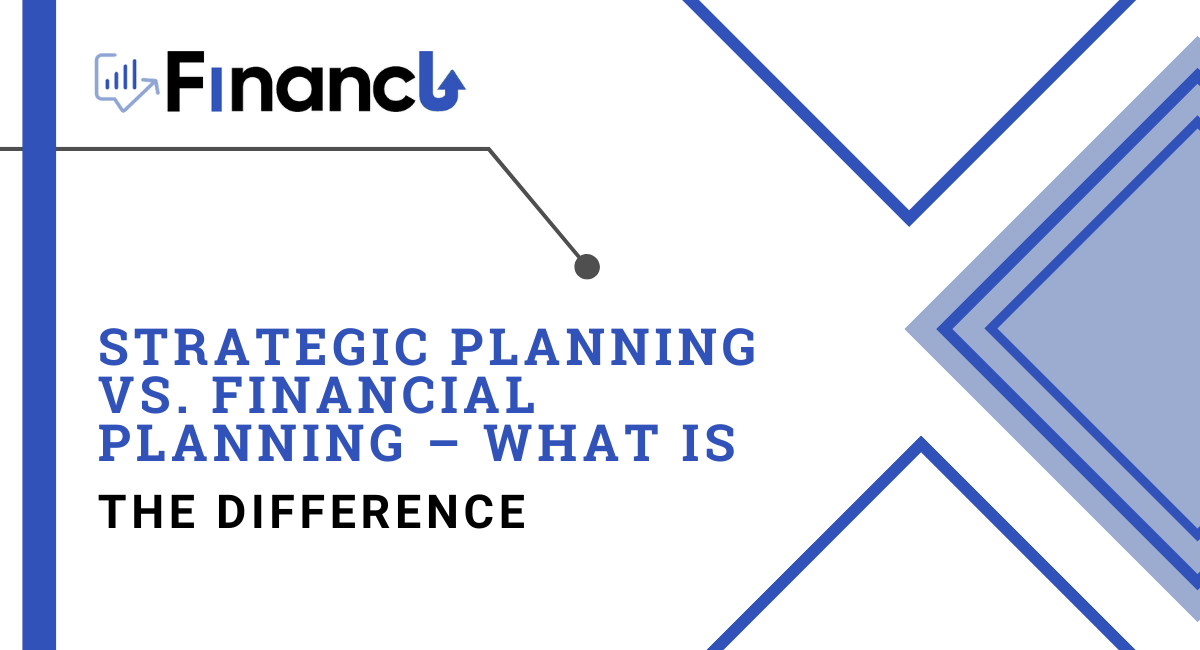
- December 29, 2022
Strategic and financial planning are two very different processes that work together to help organizations achieve their goals. Strategic planning aims to develop a vision for an organization’s future and guide its decision-making process. The purpose of financial planning is to understand how your organization will operate financially over time so that you can effectively manage resources while achieving those objectives.
Let’s do an all-inclusive analysis of what these two terms possess.
What is Strategic Planning?
Strategic planning is a process that leads organizations to clarify their mission and goals, set priorities, and make decisions. It’s used to help an organization understand its environment and develop strategies to meet its goals. Strategic plans can be created at any level of an organization—from the CEO down to individual employees—and they often focus on areas such as human resources (HR), marketing & sales (M&S), finance & accounting (F&A), information technology (IT) or general management.
Strategic planning is not just about getting things done; it’s about creating an environment where everyone works together toward common goals. So as you read this article in your company handbook or prepare for your next strategic planning meeting, remember these three things:
- A strategic plan is a piece that formulates the overall agenda of an organization. It can be a single page or a full-fledged document, depending on the structure of the business and its goals. The motive of the strategic plan is to define what you are destined to do, where you want to reach, and what your plan will be.
- Strategic plans are rarely created in isolation; instead, they should be part of your company’s overall strategy and aligned with other essential elements, such as marketing policies or financial forecasts. The best way for companies newbies (like us!) who don’t necessarily have experience writing these documents is to do due diligence before diving into their first attempt at creating one!
- Strategic planning considers internal strengths and weaknesses, external opportunities, and threats. Finally, it describes the desired future position of the organization and how it will get there.
What is Financial Planning?
Financial planning is examining an organization’s financial position and determining how best to achieve its objectives. It can be a critical step in planning for any business, large or small, government agency or non-profit organization.
It involves creating a strategy for achieving future goals and managing risk and uncertainty by examining your current situation, assessing where you’re going with your business (or other organization), identifying opportunities for growth/improvement within that direction, and then projecting out into the future based on what’s known now (including assumptions about things like revenue or expenses).
An organization must have a clearly defined financial strategy to achieve its objectives. This means developing an understanding of the financial implications of all strategic decisions. The finance function links an organization’s strategy and financial performance, translating strategists’ goals into financial objectives via the budgeting process.
In addition to providing information about how budgets should be prepared and approved for them to be effective, this role also includes the following:
- Guiding developing budgets based on mission statements/strategies/goals;
- Generating detailed reports on budgeted costs;
- Creating forecasts for future cash flows from sales activities or other sources (e.g., grants);
- Preparing annual reports highlighting key statistics such as profit margins or ROI data explicitly related to specific projects undertaken by various departments within your business unit(s).
Simply put, strategic planning is a process that helps you to decide where you want to go, and financial planning is the process of getting there. Strategic planning and financial planning are linked together. Let’s explore their differences:
Basic Difference
“Thinking before action” is what planning entails. It determines what, when, and how the task will be completed. It is not the same as strategy, which is mere “an all-inclusive proposal.” The strategy is all about adopting a technique to achieve success in a specific goal. It is the ability to manage the business’s affairs. Many times in business, the terms planning and strategy are used interchangeably.
Planning is the fundamental function of management that attempts to see into the future. On the other hand, strategy is a component of planning and is also known as structural planning. In the business world, the two terms have different meanings and applications.
Application in Business
Businesses needs to plan their financial future and look at how they can turn ideas into reality. Strategic planning is creating long-term goals and identifying how to achieve them. It provides a structured way of addressing present challenges and thinking about the future.
Setting Goals
Financial planning is essential for all businesses, whether large or small. It involves forecasting income and expenditure, setting financial targets, and monitoring performance against targets. In addition, financial planning can help to ensure that the business has adequate cash flow to meet its commitments at all times and prepare budgets that allocate sufficient funds for priority activities such as investment in equipment.
On the other hand, strategic planning focuses on long-term goals and provides a structured way of addressing the challenges in the present time and thinking about what the future may hold.
Goals Evaluation
Because long-term planning spans a long period, your company’s strategic financial management will almost certainly evolve. If your results fall short of or exceed your goals by a significant margin, it’s time to examine the strategic variance or the specific amount you miscalculated.
If there is a significant difference, determine whether it is due to faulty assumptions and accounting or unforeseen circumstances. If it is the former, you can examine your assumptions or figures more closely and recalculate in light of what you have discovered. If the discrepancy is due to the latter, you must recalculate to account for the new circumstances.
Big Picture vs. Small Picture
Strategic planning is looking at your organization over the next five years with an eye on the big picture. It’s about setting goals and objectives that will lead to future profitability for your business and figuring out where you want to be in three, five, or ten years.
Financial planning is more focused on the short-term financial needs of your business now – how much money do I need this month? What will I pay my staff? How much will this cost me? Financial planning looks at these questions in detail but only sometimes includes long-term thinking like strategic planning.
Ideas into Reality
Strategic plans focus on how to turn ideas into reality. Some of these ideas might be hugely profitable, but others may need to make more money. For this reason, strategic planning should always precede financial planning.
Strategic planning precedes Financial Planning because it helps you identify what you want your business to accomplish in the next few years. Financial Planning focuses on evaluating current performance and projecting future results based on past data points from similar companies within your industry sector (or niche).
Simply put, strategic planning looks at where you want your business to be in 3-5 years, whereas financial planning looks at what returns you can expect from your strategy regarding profit/loss and cash flow.
Impact of Execution
A good strategic plan articulates an organization’s purpose, business model, product/service offerings, business goals, and priorities over a specific planning period. A strategic plan can be as simple as a single entrepreneur brainstorming business ideas on the back of a napkin or as complex as a large multinational corporation embarking on a six-month intricate process.
In whatever form, a strategic plan is essential for aligning and communicating an organization’s purpose and setting its direction. Furthermore, the process itself can be an effective team-building and collaboration exercise. However, the most significant impact of a strategic plan is when it is embraced and implemented with discipline by various functional areas.
On the other hand, financial plans chart a course and define an organization’s financial objectives. Sound financial plans are developed with cross-functional input and tested in various scenarios. The financial plan is heavily emphasized because it is the primary measure of an organization’s performance and the basis for management bonuses and payouts. As a result, actual vs. planned performance is closely monitored, and FP&A professionals have well-established financial planning and tracking processes.
Strategic and Financial Planning are essential pillars of an organization’s foundations. Strategic planning allows you to see a more comprehensive picture, while financial planning regulates your organization’s spending. It’s important to remember that business success is not a one-way street. To ensure that you are achieving your goals, it’s crucial that both strategic and financial planning take place simultaneously. This way, you can ensure that everything is on track before committing resources to something new or risky.
Related Post

- April 9, 2024
Improving Financial Clarity through Reporting Software

- March 26, 2024
Artificial Intelligence: A Game Changer for FP&A Software

- March 7, 2024
Leveraging AI for Smarter Cash Flow Management in
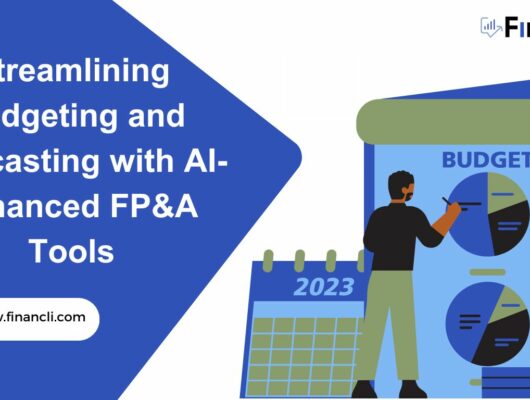
- February 28, 2024
Budgeting & Forecasting Redefined by AI FP&A Tools
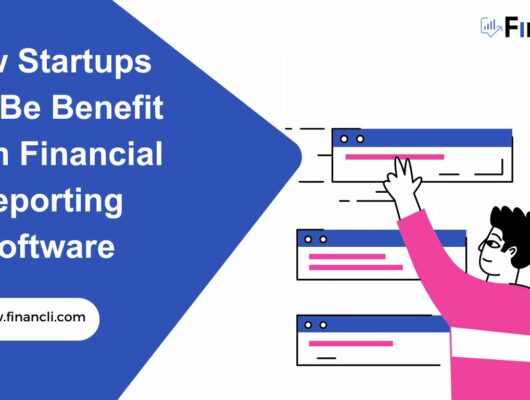
- February 20, 2024
How Startups Can Benefit From Financial Reporting Software
Leave a reply cancel reply.
You must be logged in to post a comment.
- Search Search Please fill out this field.
Portfolio Management
Portfolio management vs. financial planning: know the difference.
:max_bytes(150000):strip_icc():format(webp)/Group1805-3b9f749674f0434184ef75020339bd35.jpg)
Charlene Rhinehart is a CPA , CFE, chair of an Illinois CPA Society committee, and has a degree in accounting and finance from DePaul University.
:max_bytes(150000):strip_icc():format(webp)/CharleneRhinehartHeadshot-CharleneRhinehart-ca4b769506e94a92bc29e4acc6f0f9a5.jpg)
There is a multitude of financial advisors in the marketplace. Employing the services of one can be extremely beneficial to an individual wanting to reach an investment goal or other financial objectives. It is important to know which types of services are provided by the financial professional depending on your financial goals.
Financial Planning vs. Portfolio Management
Although it is common to use the terms " portfolio management " and " financial planning " interchangeably, these staples of the financial services industry are not the same. Portfolio management is the act of creating and maintaining an investment account, while financial planning is the process of developing overall financial goals and creating a plan of action to achieve them.
In the industry, portfolio managers typically have more experience and are further advanced in their careers as they need to deal with the complexities of investing. Financial planners typically start out in more junior roles.
Both financial planners and portfolio managers may have the same designations, but a specific certification is not required. These designations will typically include Chartered Financial Analyst (CFA), Certified Financial Planner (CFP) or Chartered Financial Consultant (ChFC). Understanding the differences between the two types of advisors will help in selecting the most suitable financial professional for your needs.
Financial Planning
Financial planning is a more thorough process than portfolio management. It is an assessment of an individual's overall financial standing with the intention of developing long term financial goals. Financial planning covers many areas such as building an emergency fund, saving for a new home or reducing debt, accumulating retirement assets, saving for a child's college fund, estate planning , or creating tax efficiency .
Before creating a comprehensive financial plan, one would need to take stock of their entire net worth. This would include a valuation of all assets, such as real estate, savings, retirement accounts, investment accounts, and any outstanding debt.
Portfolio management is provided by financial professionals that create and recommend portfolios of stocks, bonds, mutual funds , exchange traded funds (ETFs), or alternative investments to meet the investment objectives of a specific investor. Portfolio managers make day-to-day trading decisions on a portfolio of assets, whereas a financial planner makes recommendations on certain products based on the individual's goals.
Professionals who perform portfolio management are focused on meeting the needs of investors through the rate of return achieved within a portfolio and they are often responsible for rebalancing the account to remain in line with the investor's allocation preferences and risk tolerance.
One important difference between financial planners and portfolio managers is that portfolio managers are held to the concept of fiduciary duty . They are meant to manage the client's investments in good faith and prioritize the client's interests in any investment decision.
The Bottom Line
At the most basic level, financial planning is about managing and budgeting for your future financial needs, while portfolio management is investing your current capital to grow your wealth.
:max_bytes(150000):strip_icc():format(webp)/GuidetoWealthPreservation-recirc10-v1-c0402af575044b4aab3e65c521466101.png)
- Terms of Service
- Editorial Policy
- Privacy Policy
- Your Privacy Choices

The Leading Source of Insights On Business Model Strategy & Tech Business Models
Business Model Vs. Financial Model
A business model is a holistic framework to describe, understand, and analyze how companies provide and capture value. The financial model is how companies generate profits, cash, and are financially sustainable. A financial model is indeed part of the overall sustainable business model and one of its core components.
What is a Business Model?

What is A Financial Model?

Table of Contents
Key Similarities between Business Model and Financial Model:
- Part of Business Strategy: Both the business model and the financial model are essential components of a company’s overall business strategy . They play a crucial role in determining how the company operates, generates revenue, manages costs, and sustains its financial health.
- Long-Term Perspective: Both models are designed with a long-term perspective in mind. They are not just focused on short-term gains but aim to create sustainable value and financial viability for the organization over time.
- Interconnectedness: The financial model is a subset of the business model and is closely interconnected with other elements of the business model. The financial model supports and aligns with the overall business strategy and value proposition .
Key Differences between Business Model and Financial Model:
- Scope and Purpose: The business model is a comprehensive framework that outlines how the company creates, delivers, and captures value in the market. It encompasses various aspects such as value propositions, customer segments, channels, and revenue streams. On the other hand, the financial model is specifically focused on the financial aspects of the business, including revenue forecasting, cost analysis , profitability projections, and cash flow management.
- Level of Detail: The business model provides a high-level overview of the company’s value proposition and the way it operates, while the financial model delves into detailed financial projections and analysis based on the assumptions made in the business model.
- Audience and Usage: The business model is often used for strategic planning, market analysis , and communication with stakeholders, including investors, partners, and customers. It helps to showcase the company’s unique selling points and value creation potential. On the other hand, the financial model is primarily used for internal financial planning, budgeting, and decision-making. It helps management assess the financial feasibility of the business model and make data-driven financial decisions.
- Components and Elements: The business model consists of various components, such as the value proposition , customer segments, key activities, resources, and partnerships. It outlines the overall value chain of the business. The financial model, on the other hand, focuses on specific financial elements, such as revenue projections, cost breakdown, profit margins, and cash flow forecasts.
Business Model Examples :
- Direct Sales Model : Apple sells its products directly to consumers via its Apple Stores and online store.
- Freemium Model : Spotify offers a free version of its music streaming service with ads, and a premium version without ads and with added features for a subscription fee.
- Subscription Model : Netflix charges customers a monthly fee to access its library of movies and TV shows.
- Affiliate Marketing Model : A blogger promotes products and earns a commission for every sale made through their referral link.
- Marketplace Model : eBay connects sellers with buyers and takes a commission from each sale.
- Franchise Model : McDonald’s allows entrepreneurs to operate their own McDonald’s restaurants using the brand , processes, and resources of the parent company for a fee.
- Advertising Model : Google offers its search engine services for free and earns revenue through targeted advertising.
- Crowdsourcing Model : Wikipedia relies on volunteers to create and edit content, allowing it to offer a vast encyclopedia for free.
- Razor and Blades Model : Gillette sells razors at a low cost or even a loss, but replacement blades (which customers need to buy regularly) have high margins.
- Peer-to-Peer Model : Airbnb allows homeowners to rent out their properties to travelers.
Financial Model Examples :
- Cost-plus Pricing : A company determines the cost of producing a product and adds a markup percentage for profit. For instance, if a shirt costs $10 to produce, and they want a 20% profit, they’ll sell it for $12.
- Discounted Cash Flow (DCF) Model : Used to estimate the value of an investment based on its future cash flows.
- Comparative Company Analysis (CCA) : This model involves comparing a company’s valuation metrics to other firms within the same industry to determine its relative value.
- Budget Model : Companies forecast their income and expenses for the upcoming year to set budgets.
- Break-even Analysis : Determines the point at which total costs and total revenue are equal, meaning there’s no net loss or gain.
- Projected Income Statement : Forecasts a company’s revenues, costs, and profits for a future period.
- Balance Sheet Projection : Predicts a company’s assets, liabilities, and equity for a future date.
- Capital Asset Pricing Model (CAPM) : Used to determine a theoretically appropriate required rate of return of an asset.
- Merger and Acquisition Model : Used by companies to evaluate the financial impact of merging with or acquiring another company.
- Option Pricing Model : Used in finance to calculate the fair value of an option based on factors such as stock price, exercise price, time to expiration, and volatility.
Key Highlights :
- A holistic framework used to describe, understand, and analyze how companies provide and capture value.
- Focuses on finding a systematic way to unlock long-term value for an organization.
- Delivers value to customers and captures value through monetization strategies.
- Value model (e.g., value propositions, mission , vision)
- Technological model (e.g., R&D management)
- Distribution model (e.g., sales and marketing organizational structure )
- Financial model (e.g., revenue modeling, cost structure, profitability and cash generation/management)
- Pertains to how corporations finance their assets, typically through debt or equity.
- Key elements include cost structure, profitability, and cash flow generation.
- Is a subset of the business model and one of its core components.
- Both are vital components of a company’s overall business strategy .
- Designed with a long-term perspective, focusing on sustainable value and financial viability.
- The financial model is closely interconnected with the business model and aligns with the overall business strategy and value proposition .
- Business Model: Comprehensive, outlining how the company creates, delivers, and captures value.
- Financial Model: Specifically focuses on financial aspects such as revenue forecasting, cost analysis , and cash flow management.
- Business Model: Provides a high-level overview of the company’s operations.
- Financial Model: Offers detailed financial projections and analysis .
- Business Model: Used for strategic planning, market analysis , and communication with stakeholders.
- Financial Model: Used for internal financial planning, budgeting, and decision-making.
- Business Model: Includes components like value proposition , customer segments, and key activities.
- Financial Model: Focuses on specific financial elements like revenue projections and cash flow forecasts.
Main Free Guides:
- Business Models
- Business Strategy
- Business Development
- Distribution Channels
- Marketing Strategy
- Platform Business Models
- Network Effects
Connected Strategy Frameworks
ADKAR Model

Ansoff Matrix

Business Model Canvas

Lean Startup Canvas

Blitzscaling Canvas

Blue Ocean Strategy

Business Analysis Framework

Balanced Scorecard

Blue Ocean Strategy

GAP Analysis

GE McKinsey Model

McKinsey 7-S Model

McKinsey’s Seven Degrees

McKinsey Horizon Model

Porter’s Five Forces

Porter’s Generic Strategies

Porter’s Value Chain Model

Porter’s Diamond Model

SWOT Analysis

PESTEL Analysis

Scenario Planning

STEEPLE Analysis

Main Guides:
- Business Model Innovation
- Network Effects In A Nutshell
- Digital Business Models
More Resources

About The Author
Gennaro Cuofano
Discover more from fourweekmba.
Subscribe now to keep reading and get access to the full archive.
Type your email…
Continue reading
- 70+ Business Models
- Airbnb Business Model
- Amazon Business Model
- Apple Business Model
- Google Business Model
- Facebook [Meta] Business Model
- Microsoft Business Model
- Netflix Business Model
- Uber Business Model
- Application Requirements
- Student Experience Q&A
- Business Analytics Certificate
- Finance Certificate Programs
- Tuition & Financial Aid
- International and Transfer Students
- Military Friendly
- How to Apply
- Accreditation
- Leadership Development Resources
- MBA Career Outcomes
- MSBA Career Outcomes

Financial Planning and Analysis (FP&A): Mastering Skills & Roles

Forget silos and spreadsheets. Modern financial planning and analysis (FP&A) leaders do more than report information to a business. Today, they have a seat at the table.
In today’s competitive business landscape, they partner with senior leaders and shape an organization’s future success. 1 To that end, FP&A leaders must develop agile teams with skilled statisticians and communicators. In a time marked by rapid innovation, rising geopolitical tensions and shifting market trends, FP&A teams also need to work with data. Then, they must be empowered by senior management to share data and insights across the organization.
In the past, siloed teams worked independently and that limited who could access data about the business. 2,3 Without collaboration, finance and operations teams often pursue conflicting objectives, resulting in disjointed financial strategies for the business. 2,3 Without the full picture, how can leaders adequately prioritize investments? How can they adapt to changing market conditions without real-time data? By fostering greater collaboration, modern FP&A leaders can paint an accurate picture of an organization’s financial health. They can effectively identify risk, anticipate trends, and seize opportunities to drive profitability and growth.
This post explores diverse roles in modern FP&A, skills required for success and industry challenges and trends.
Introduction to Financial Planning and Analysis (FP&A)
FP&A is a strategic function within organizations responsible for forecasting, budgeting, financial reporting, analysis and decision support. It involves analyzing historical data, identifying trends and providing insights to support management in making informed financial decisions. FP&A professionals are crucial in driving business performance by providing actionable insights, scenario planning and financial modeling to optimize resource allocation and achieve strategic objectives.
Essential Skills for FP&A Professionals
In the last 10 years, the FP&A industry has evolved significantly due to technological advancements and changing business landscapes. There’s been a dramatic shift from FP&A as a reporting function to a financial strategy that is data-driven, which requires knowledge of sophisticated financial modeling tools, automation and advanced analytics techniques. 1,2
To stay relevant, FP&A professionals need to continuously develop skills in key areas such as: 4
- Forecasting: Master financial modeling tools and techniques to anticipate future trends and assess the potential impact of strategic decisions
- Data Analysis: Extract meaningful insights from complex financial datasets, guiding informed decision-making
- Budgeting and Variance Analysis : Facilitate the development of realistic financial plans and identify deviations from expected outcomes, enabling proactive adjustments.
- Financial Software : Enhance efficiency in financial analysis and reporting, streamlining FP&A processes
Diverse Roles for Accounting Professionals Within FP&A
FP&A professionals are integral to an organization due to their roles in budgeting, forecasting, and strategic decision-making. They also contribute to the financial health and future direction of the company through various levels of responsibility and expertise. Amid a fast-changing technology landscape, new roles have emerged that require specialized knowledge, such as advanced analytics techniques as well as the ability to integrate technologies to drive efficiency.
Here are some diverse roles to consider: 5
- Business Intelligence Specialist : Develop and maintain business intelligence tools and platforms that allow stakeholders to access and visualize financial data in real time. They play a vital role in democratizing data across the organization and empowering decision-makers
- Financial Data Scientist: Identifies patterns, trends and anomalies in financial data, enabling better decision-making and strategic planning
- FP&A Analyst: Creates financial models, conducts performance analysis, and generates reports to support strategic decision-making
- FP&A Director: Shapes the strategic direction of financial planning initiatives, collaborates with executive leadership and drives performance improvement
- Chief Financial Officer: Collaborates with FP&A professionals to align financial strategies with broader business objectives, fostering growth and profitability
Lessons From Famous CFOs
If you want to fast-track your FP&A career, look no further than Ana Gugino and Jason Child. Their success stories illustrate how important it is to continuously grow your expertise throughout your career: 6
- Ana Gugino, CFO, Target : Transitioned from Senior VP of FP&A at Target to CFO at Papa John’s International. Recognized for leadership in driving demand and profitability, overseeing a team of 200 financial analysts. Demonstrated expertise in revenue generation and business strategy alignment through future financial planning at Target
- Jason Child, CFO, Splunk : Started in Amazon’s FP&A function, contributing to the development of Amazon Prime. Analyzed multiple business growth scenarios, including free shipping, leading to the birth of the Prime program now boasting 200 million members
The Impact of Master’s Degree on Your Accounting Career
Whether you’re aiming to work for a small organization or global company, pursuing a master’s degree in accounting offers several advantages for FP&A professionals. First, you will learn to approach complex financial challenges with greater confidence and competence. The advanced coursework provides in-depth knowledge of accounting principles, financial analysis techniques and strategic financial planning methods.
Additionally, master’s accounting degree programs have adapted their curriculum to accommodate the critical role of data analytics in accounting tasks, such as auditing and fraud detection. So, look for courses that teach you how to analyze large datasets using tools like Excel, SQL and specialized analytics software. Count on hiring managers to take notice. They often view candidates with specialized knowledge as more capable of leading teams effectively and driving organizational success.
Technological Advancements in FP&A
FP&A teams are leveraging technology more than ever before to work more efficiently and enhance an organization’s financial forecasting and decision-making. With predictive analytics, AI algorithms can analyze historical financial data to predict future trends, cash flow patterns and potential risks. 7 This enables businesses to develop robust financial strategies. The rise of artificial Intelligence is another development. AI-powered tools can generate customized financial reports quickly and accurately, based on predefined criteria. 7 These reports provide stakeholders with timely insights into the financial health of the organization.
Finally, cloud-based solutions offer scalability, real-time collaboration, advanced reporting and data security benefits. This empowers teams to work efficiently across locations and make data-driven decisions related to products, innovation and more. 7 These technologies improve budgeting, planning and forecasting processes, allowing professionals to focus on strategic activities while mitigating risks in today’s dynamic business landscape.
Future Trends in FP&A
In the ever-evolving landscape of financial planning and analysis (FP&A), experts point to significant trends related to adaptability, collaboration and the use of technology. FP&A teams must embrace frequent financial forecasts, scenario modeling, and collaboration beyond the finance department to fortify the organization against unforeseen challenges. 8
Another trend involves FP&A teams leveraging technology to not only attract the best talent but, also, effectively harness the capabilities of financial software. 8 FP&A teams have a wealth of data at their fingertips, such as customer behavior, employee engagement and company productivity. If the information is used effectively, it can accelerate growth. The business may need to decide whether to hire more sales staff or which products or services to scale. By using artificial intelligence, FP&A professionals can provide more accurate financial forecasts, which bolsters investor confidence amidst uncertainty. 8 The focus is on understanding the data’s meaning for the business and communicating that to stakeholders. 6
Prepare To Lead in the Accounting Profession
Great business leaders can be made. William & Mary’s Online Master of Accounting (MACc) program is designed to shape you into a decision-maker with influence. Our innovative scholars and experts have deep experience teaching students to assess a company’s processes and think critically to solve problems. They show you how to see beyond the numbers to glean insights from data and make informed leadership decisions.
Earning your accounting degree online is a great way to find flexibility and learn from anywhere. This distinguished online accounting program is built to equip you with financial planning and analysis expertise and the technology skills you need to advance your career. The robust curriculum includes courses in driving organizational performance and accounting analytics and information systems. It’s also designed to seamlessly integrate with your life and schedule and promote lifelong connections with faculty and peers. This specialized online master’s accounting program also helps you practice and refine the skills you need to pass the CPA exam and helps you progress toward fulfilling your CPA coursework requirements.
At William & Mary, we are invested in helping you become the best possible FP&A leader you can be. Don’t wait to start moving up with a master’s accounting degree. Schedule a call with one of our admissions outreach advisors today.
- Retrieved on February 16, 2024, from linkedin.com/pulse/re-inventing-modern-fpa-leader-anders-liu-lindberg
- Retrieved on February 16, 2024, from polestarllp.com/blog/top-7-financial-planning-and-analysis-trends-for-modern-financial-strategy
- Retrieved on February 16, 2024, from fpa-trends.com/article/finance-silos-and-how-avoid-these
- Retrieved on February 16, 2024, from linkedin.com/pulse/story-ca-who-became-successful-fpa-professional-financeinme-ploue/
- Retrieved on February 16, 2024, from tealhq.com/job-titles/fp-a-analyst
- Retrieved on February 16, 2024, from datarails.com/from-fpa-to-cfo/
- Retrieved on February 16, 2024, from opengrowth.com/resources/top-financial-planning-and-analysis-trends-for-modern-financial-strategy
- Retrieved on February 16, 2024, from jedox.com/en/blog/fpa-trends/
Return to Online Business Blog
William & Mary has engaged Everspring , a leading provider of education and technology services, to support select aspects of program delivery.
- Credit cards
- View all credit cards
- Banking guide
- Loans guide
- Insurance guide
- Personal finance
- View all personal finance
- Small business
- Small business guide
- View all taxes
You’re our first priority. Every time.
We believe everyone should be able to make financial decisions with confidence. And while our site doesn’t feature every company or financial product available on the market, we’re proud that the guidance we offer, the information we provide and the tools we create are objective, independent, straightforward — and free.
So how do we make money? Our partners compensate us. This may influence which products we review and write about (and where those products appear on the site), but it in no way affects our recommendations or advice, which are grounded in thousands of hours of research. Our partners cannot pay us to guarantee favorable reviews of their products or services. Here is a list of our partners .
How Does Long COVID Affect Your Retirement Planning?

Many or all of the products featured here are from our partners who compensate us. This influences which products we write about and where and how the product appears on a page. However, this does not influence our evaluations. Our opinions are our own. Here is a list of our partners and here's how we make money .
Planning for retirement is at least partially about building a financial structure that will support you or your loved ones if something happens, including illness or disability.
And the potential for that “something” has risen in recent years: Almost 1 in 5 adults age 50 and over say they’ve had symptoms of long COVID, according to a 2023 survey from AARP. Common effects include fatigue, brain fog, difficulty breathing, anxiety, depression and gastrointestinal issues, and 39% have had symptoms for a year or more.
“So many people got infected with COVID, you have a much bigger number of people who are infected with a significant chronic disease,” says Carolyn McClanahan, a physician-turned-certified financial planner in Jacksonville, Florida.
At the heart of the matter, long COVID isn’t unique in the way it impacts your retirement strategy — but it does reinforce that a successful retirement plan must hold up to unexpected illness. Here are some tactics to make your plan more resilient.
Beef up your emergency fund
At any stage of life, it’s important to have cash on hand in case you need it. “Too many people sock money away in retirement plans where it can be harder to access if you have an issue,” McClanahan says.
Depending on your life circumstances, you may want to have as much as six to 12 months of savings set aside. Your savings can help you make ends meet if you get sick and can’t work, or if you’re waiting for disability benefits to kick in.
“Life happens, emergencies happen,” says Ashton Lawrence, a CFP in Greenville, South Carolina. Instead of having to tap a home equity line of credit or take on debt, he says, you’ll have this cash sitting on the sidelines for emergency situations.
Review your estate plan
A basic estate plan might include a will, advance directive and both medical and financial powers of attorney. This helps ensure that if you’re incapacitated or unable to speak for yourself, your health and your affairs will be handled the way you want them to be.
If you didn’t work with an estate planning attorney to create your plan, have one review your documents to make sure they were executed correctly. Requirements for powers of attorney vary from state to state, says Shari Fleming, an estate planning attorney in Owings Mills, Maryland.
Fleming also encourages her clients to write a letter of intent that puts their wishes down on paper, such as the goals behind their estate plan or how they’d like the end of their life to go. “It’s not a legal document, but it does fill in the blanks,” she says.
Buy great health insurance
Don’t skimp on health coverage — get the best plan you can afford. If you’re under 65 or still covered by an employer plan, make sure you have the money to cover the plan deductible if you need medical care. “If you have long COVID, you’re pretty much going to max out your deductible every year,” McClanahan says.
If you’re eligible for Medicare, McClanahan recommends Original Medicare with a Medigap policy for greatest flexibility. “With Medicare Advantage, you’re basically locked into your insurer’s network, and they’re the ones who get to ration your care,” she says. “If you have traditional Medicare, you don’t have that issue.”
Compare Medigap plans
Hit retirement savings goals early.
“I have clients that maybe aren’t as prepared for retirement as they need to be, and they tell me, ‘I know I’m going to have to work until I’m 67 or 70,'” says Liz Windisch, a CFP in Denver. “What if you get sick? What if your partner or parent or sibling gets sick and you have to care for them and can’t work full time?”
Windisch encourages her clients to get more aggressive with savings goals , and if they can’t save more, to get a roommate or a part-time job to make it happen. “I hope you can work until you’re 67 … but we need to plan as if you might not be able to do that,” she says.
Simplify your money life
Because there’s always the possibility of incapacity as you get older, streamlining your finances makes it easier if someone has to step in to manage things. Consolidate accounts, keep a list of usernames and passwords, and keep a folder with at least one statement from each bill that you pay.
Noah Damsky, a financial adviser in Los Angeles, has a client who was very independent before she started experiencing long COVID symptoms. Since then, her family has had to get more involved in her life. “We’ve got to make sure other family members are playing a more active role in some of the things they didn't [do] before, like making sure some bills get paid, doctors are seen, things like that,” Damsky says.
Check your life and disability coverage
If you have disability insurance through your employer, consider paying for higher coverage, if you can — employer plans for long-term disability usually replace just 60% of your income. Consider, also, a life insurance policy with a disability rider, which is generally less expensive than buying a disability policy independently.
Gregory Corneille, a CFP in Lawrenceville, Georgia, recommends life insurance with critical and chronic illness riders for people who have little or no disability coverage. Critical illness riders cover things like cancer, heart disease and lung disease. Though carriers may not have updated their coverage definitions to include long COVID specifically, long COVID causes some of the issues on the list, Corneille says.
You can also buy a life insurance policy with a long-term care rider, so you can use the death benefit to pay for long-term care costs like a nursing home or a home care worker.
“We’re going to find a lot of people that have a lot more health problems than they used to,” Windisch says. “COVID affects people in ways we haven't even realized yet.”
This article was written with the support of a journalism fellowship from the Gerontological Society of America, the Journalists Network on Generations and the Silver Century Foundation.
On a similar note...
Still deciding on the right carrier? Compare Medigap plans

- India Today
- Business Today
- Reader’s Digest
- Harper's Bazaar
- Brides Today
- Cosmopolitan
- Aaj Tak Campus
- India Today Hindi
Income tax planning in FY25: Who should opt for old regime?
The new tax regime is automatically selected as the default option unless the taxpayer informs their employer about their preference..
Listen to Story

- Taxpayers must choose tax regime by April 1, 2024
- New regime has universal Rs 3 lakh exemption
- Late tax return filing defaults to new regime
Taxpayers, beginning April 1, 2024, face an important decision regarding their income tax regime which would affect their financials.
If they do not inform their employers about their preferred tax regime, they will be automatically enroled into the new tax regime .
Hence, it is important that they choose the right income tax regime and plan their finances to reduce their tax burden as both tax structures offer different advantages and considerations.
Here is a comparison before deciding on the income tax regime:
Exemption limit - Under the new tax regime, individuals can earn up to Rs 3 lakh tax-free, regardless of age. This exemption applies universally to all individuals who opt for the new regime.
However, the old tax regime has different exemption limits based on age.
"The basic exemption limit for an individual below 60 years of age is Rs 2.5 lakh in a financial year and for senior citizens aged between 60 and 80 years is Rs 3 lakh. For super senior citizens, aged 80 years and above, income up to Rs 5 lakh is exempt from tax," said Rajarshi Dasgupta, Executive Director, Taxation, AQUILAW.
Tax rebates - The new tax regime offers a higher tax rebate compared to the old regime. With the new system, individuals can receive rebates of up to Rs 25,000, resulting in zero tax payable for incomes up to Rs 7 lakh.
"The old tax regime offers tax rebate up to Rs 12,500 which makes zero tax payable for net taxable income up to Rs 5 lah," said Dasgupta.
Exemptions in tax - The old tax regime provides more tax exemptions and deductions than the new regime.
"Some of the examples of deductions available are Section 80C up to Rs 1.5 lakh for specified investments and expenditures; Section 80D for premiums paid for health insurance policies; Section 80CCD (1B) for additional investment in the National Pension System (NPS) up to Rs 50,000. Individuals can also claim deduction on interest paid on home loans for a maximum of Rs 2 lakh, deduction on interest paid on education loan as well as deduction on donations made. Apart from the deductions, an individual can claim tax exemption on house rent allowance (HRA) as well as leave travel allowance (LTA)," added Dasgupta.
However, the new regime offers only two deductions: a standard deduction of Rs 50,000 and a deduction for an employer's contribution to the NPS account.
Surcharge rates - There's a difference in surcharge rates between the two regimes. Under the new tax system, the surcharge rate is reduced from 37% to 25% for incomes over Rs 5 crore.
Which income tax regime to choose?
Deepak Avasthy, Senior Manager of Corporate Tax at SW India, suggests that individuals with lower taxable incomes or substantial deductions may find the old regime more beneficial.
"Considering the benefit of lower tax rates available in new regime, the old regime will only be beneficial for individuals who have relatively lower taxable income or have significant deductions and exemptions available for adjustment," said Avasthy.
He further said that in a case where an individual seeks more disposable income in hand with less commitment to investing money to saving tax, the new tax regime is good to go.

COMMENTS
An example of a financial plan in Excel format. As explained above, a financial plan is an element of every business plan. A financial plan can take different forms (charts, tables) yet should always at least show the projection over a certain period (3- to 5-year usually) of the 3 financial statements.A financial plan should also include some historical data (if any).
The business plan, a noun, is a tactical document. It's typically created for a specific purpose, such as securing a Small Business Administration (SBA) loan. Think of it as a road map - it outlines the route and the destination (in this case, the coveted bank loan). But once you've reached your tactical goal (in this case, getting the loan ...
Integrated Financial Planning (IFP) and Integrated Business Planning (IBP) mean different things to different people. Primarily because there is no universal definition of what "fully integrated" processes entail. This article presents a maturity model to explain what it means and the capabilities that comprise it.
Business financial planning is a crucial process that organizations must undertake to navigate the complex world of finance and achieve their goals. From setting clear financial objectives to creating budgets, managing cash flow, and analyzing financial performance, financial planning forms the foundation for informed decision-making and long ...
A financial planner is more concerned with funding the business. This role includes activities such as raising capital, corporate strategy, budgeting and forecasting, and overseeing mergers and acquisitions. Financial planning aims to get the best risk-adjusted returns and will track metrics like cash flow, profit margin, and cost of capital ...
Steps to Develop a Business Financial Plan. A. Setting Financial Goals: B. Budgeting Techniques. C. Forecasting and Projections: Individual vs. Business Financial Plans. Conclusion: Share This Blog. In this fast and competitive world, the success of a business depends on how prepared they are. Prepared to adapt, to keep up with rivals, to ...
Financial Plan Overview. A financial plan is a comprehensive document that charts a business's monetary objectives and the strategies to achieve them. It encapsulates everything from budgeting and forecasting to investments and resource allocation.. For small businesses, a solid financial plan provides direction, helping them navigate economic challenges, capitalize on opportunities, and ...
A financial plan is a strategic approach to finances that marks out a road-map to follow into the future. A financial forecast is an estimate of future outcomes arrived at using one of several ...
There are three main differences between business planning and budgeting: the scope, the time frame, and the depth. Business plan vs. budget: The scope. A budget only includes a financial forecast, whereas a business plan will also detail the commercial opportunity and the market, the company and its organisation and strategy over the next few ...
Financial Plan: A financial plan is a comprehensive evaluation of an investor's current and future financial state by using currently known variables to predict future cash flows , asset values ...
A financial plan covers one point in time. The financial planning process is an iterative one, consistently making adjustments to account for unexpected changes. In other words, a financial plan is static, while the financial planning process is dynamic. 2. A financial plan might be part of the financial planning process.
A strong strategic plan provides the vision and direction, while solid financial planning ensures the resources are available to execute that plan effectively. The Bottom Line. In the realm of business, strategic planning and financial planning are not mutually exclusive, but rather complementary approaches.
A financial plan serves as a roadmap for your economic growth, showing where you're at right now, where you want to go, and how you will get there. You can create a financial plan for personal and business purposes, but these processes are slightly different. We'll explain more about personal vs business financial planning later in this ...
Broaden the scope of traditional financial planning and analysis (FP&A) to business planning and analysis (BP&A). For decades, organizations' finance departments have used FP&A to budget and forecast within a fiscal year, conduct historical reporting, and generate standard reports. While this traditional approach worked well in the past ...
Benefits of financial planning . Financial planning in business requires clear company goals. You can't plan if you don't know what you're planning for. There are plenty of benefits to financial planning, including, but not limited to: Better cash flow planning; More intentional budgeting; A clear growth roadmap ; Smoother fundraising
Financial planning and analysis (FP&A) is the process of budgeting, analyzing, and forecasting the financial data, which can help the organization to be aligned to its financial goals and also support strategic business decisions of the company; it also helps an investor to know if the company is stable and profitable enough for the investment.
Financial planning and forecasting techniques are essential for businesses that want to prepare for the future and any challenges that may arise. The benefits of financial projections are endless, and companies must take action to implement high-quality techniques into their planning. To start, consider the following advantages of financial ...
Financial planning is the process of creating a comprehensive plan to save and budget money for your future. It involves proactive planning for some of life's major financial events like funding education, buying a home, starting a business and retirement.Usually, the ultimate goal of financial planning is to ensure you have enough savings to live comfortably when you retire.
5 - Strategy vs. Tactics: Financial planning focuses on strategy for overall success. In contrast, budgeting focuses on tactics for achieving those strategies, such as cost-cutting measures or marketing campaigns. 6 - Vision vs. Execution: Financial planning considers where you want to go with your business.
Strategic and Financial Planning are essential pillars of an organization's foundations. Strategic planning allows you to see a more comprehensive picture, while financial planning regulates your organization's spending. It's important to remember that business success is not a one-way street.
Financial planning can help you reduce tax liabilities, plan a wedding, recover from debt, have children, pay for higher education or manage risk, retirement and estates. Your financial plan includes steps you plan to take to achieve financial goals. A good financial plan often tracks your progress toward goal completion quarterly or ...
A business plan is a document that lays out a company's strategy and, in some cases, how a business owner plans to use loan funds, investments and capital. It demonstrates that a business is ...
Portfolio managers make day-to-day trading decisions on a portfolio of assets, whereas a financial planner makes recommendations on certain products based on the individual's goals. Professionals ...
A business model is a holistic framework to describe, understand, and analyze how companies provide and capture value. The financial model is how companies generate profits, cash, and are financially sustainable. A financial model is indeed part of the overall sustainable business model and one of its core components. Aspect Business Model Financial Model Definition […]
Introduction to Financial Planning and Analysis (FP&A) FP&A is a strategic function within organizations responsible for forecasting, budgeting, financial reporting, analysis and decision support. It involves analyzing historical data, identifying trends and providing insights to support management in making informed financial decisions.
Planning for retirement is at least partially about building a financial structure that will support you or your loved ones if something happens, including illness or disability. And the potential ...
However, the old tax regime has different exemption limits based on age. "The basic exemption limit for an individual below 60 years of age is Rs 2.5 lakh in a financial year and for senior citizens aged between 60 and 80 years is Rs 3 lakh. For super senior citizens, aged 80 years and above, income up to Rs 5 lakh is exempt from tax," said ...